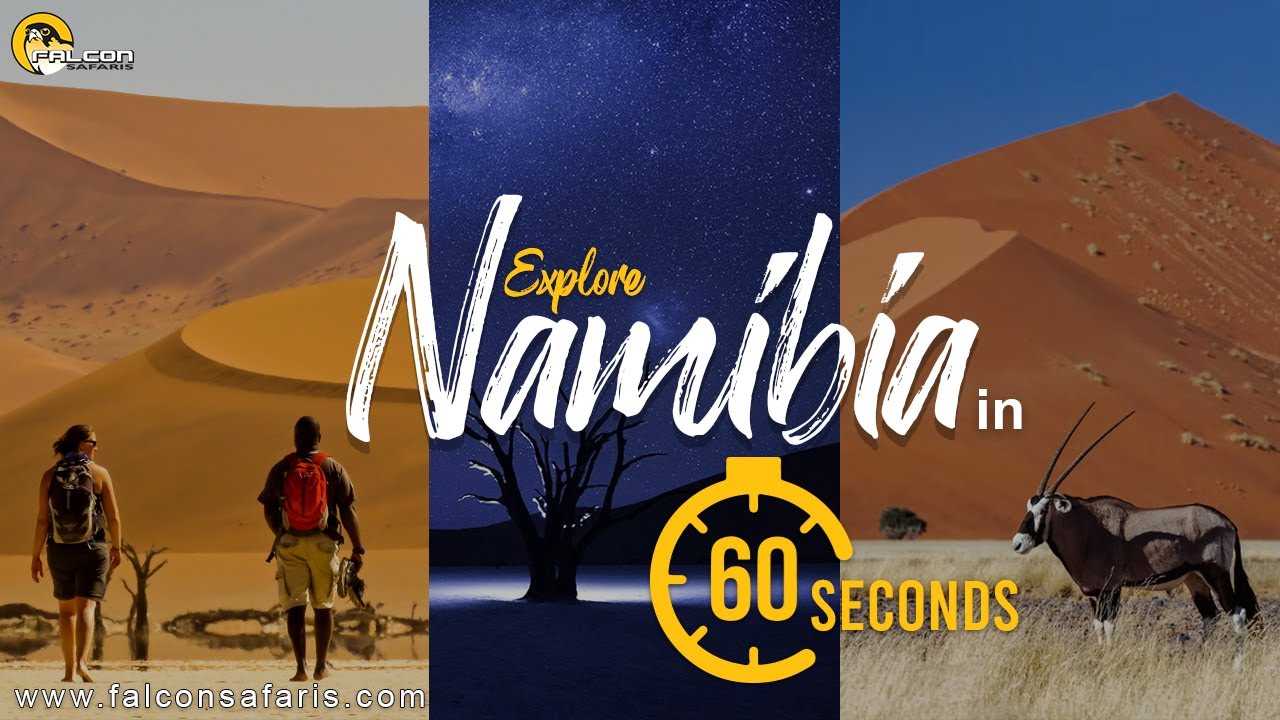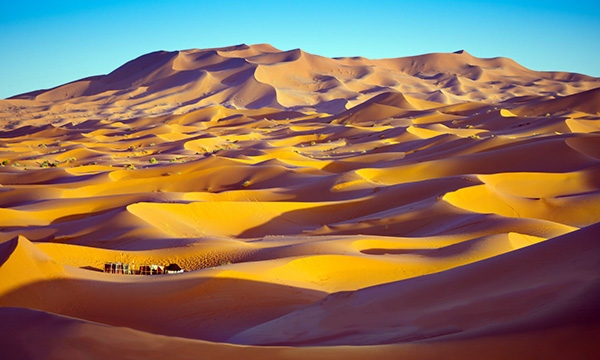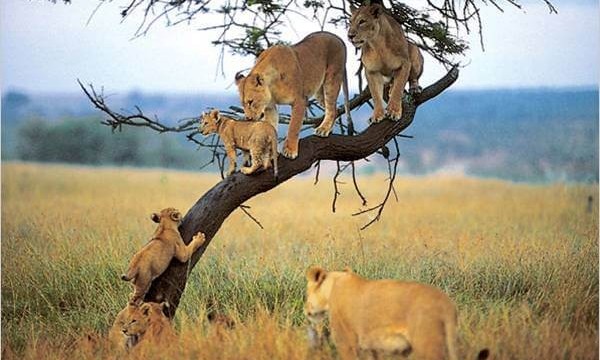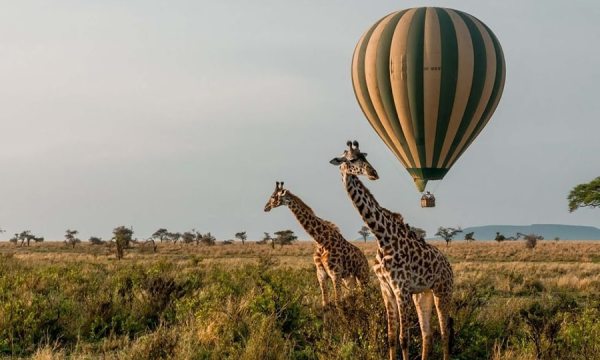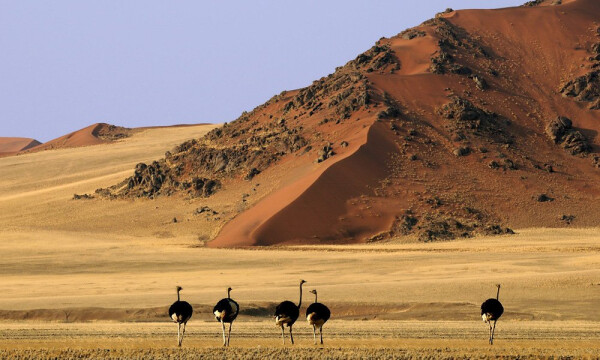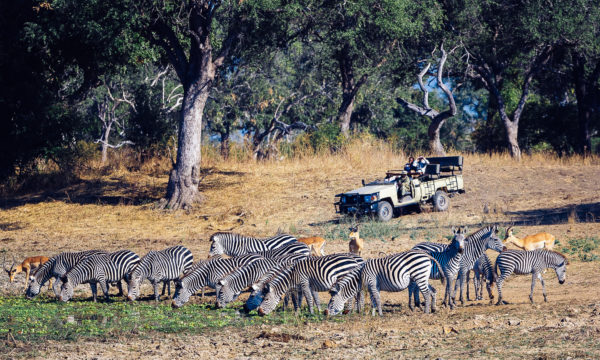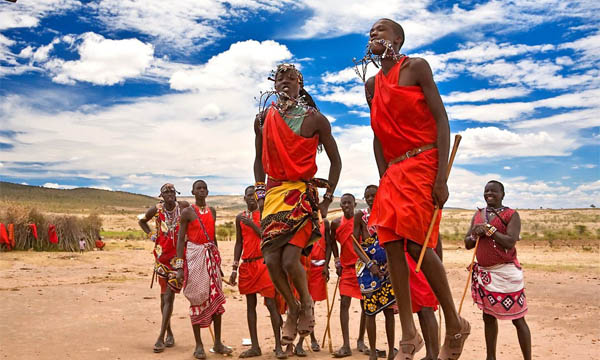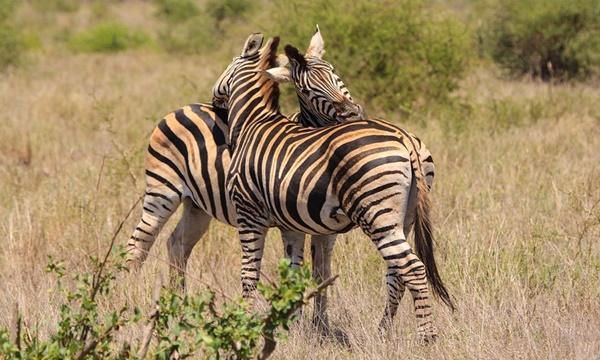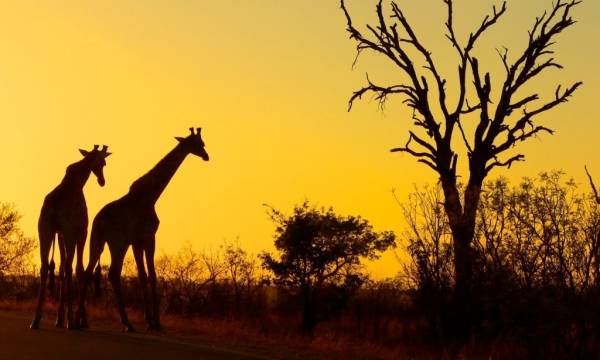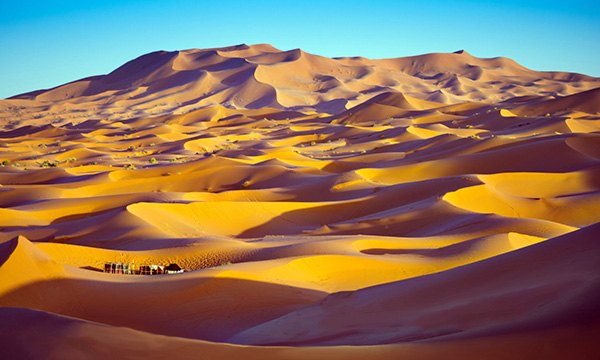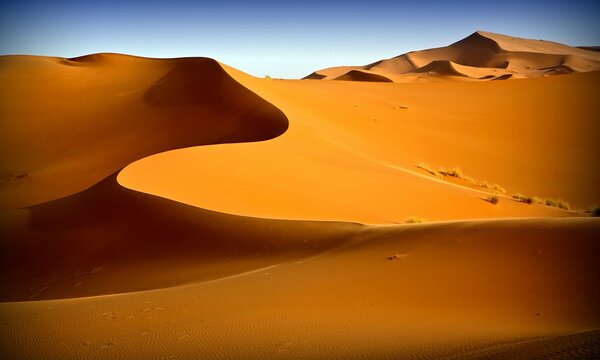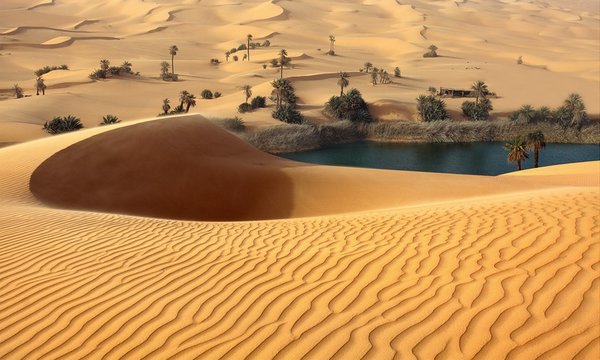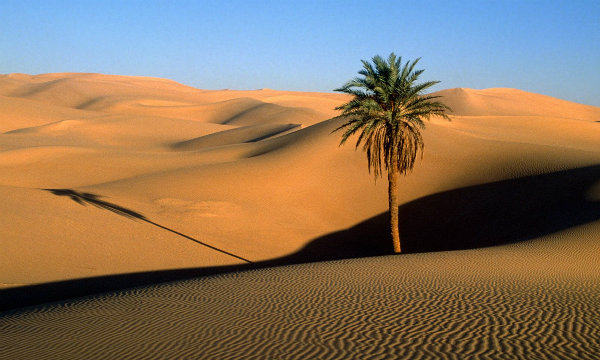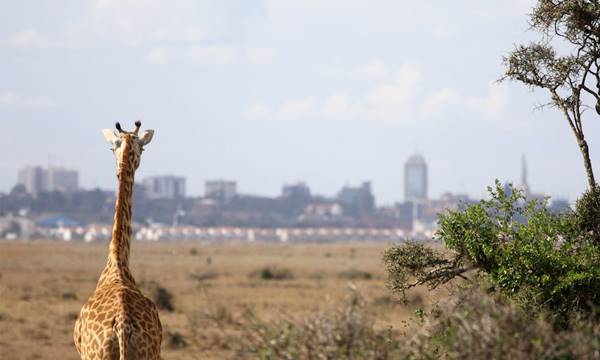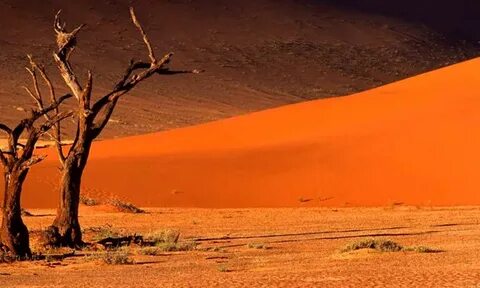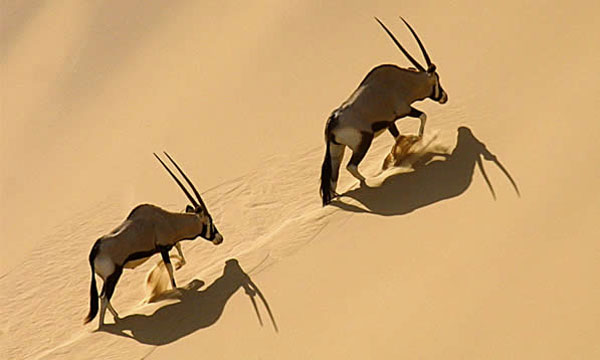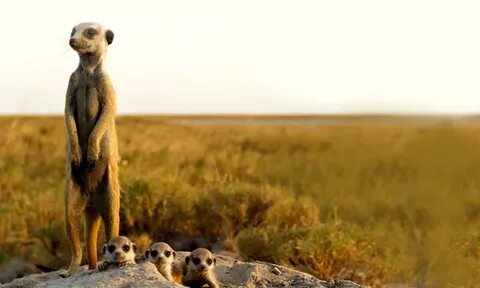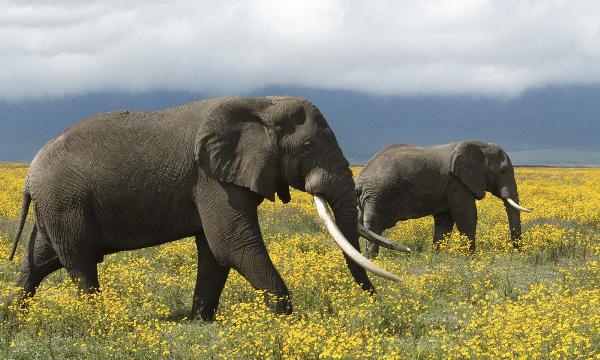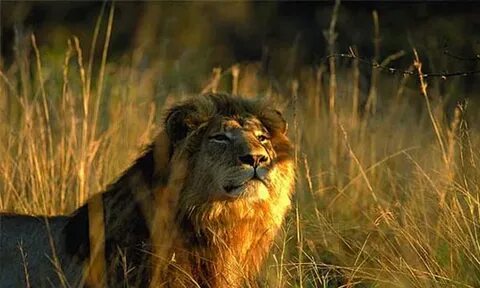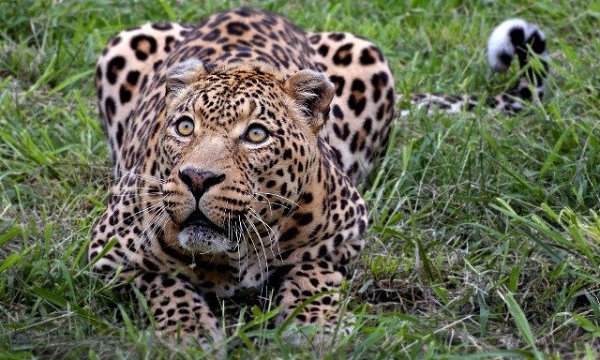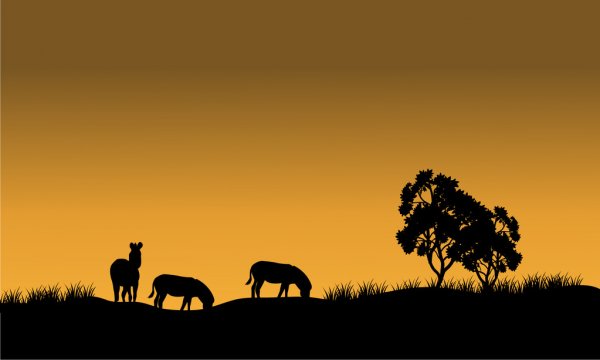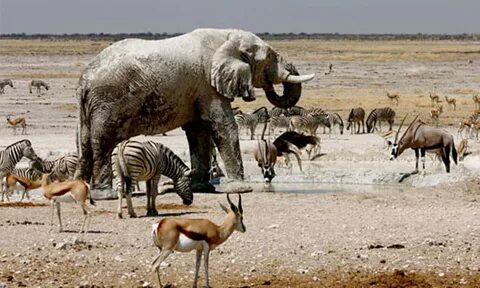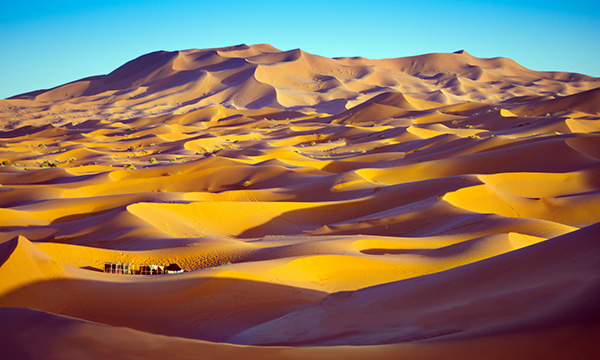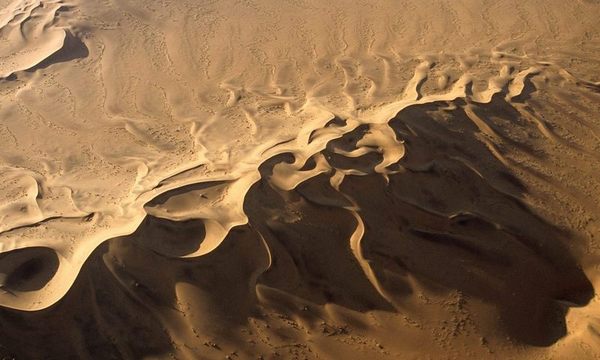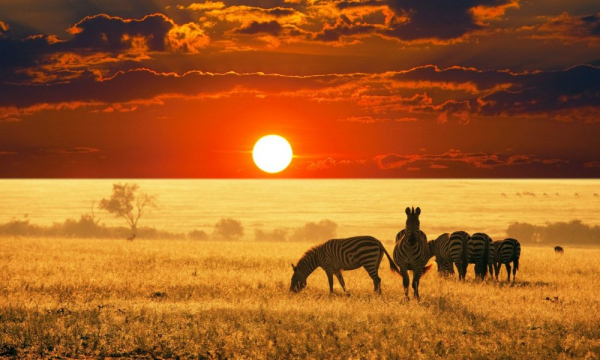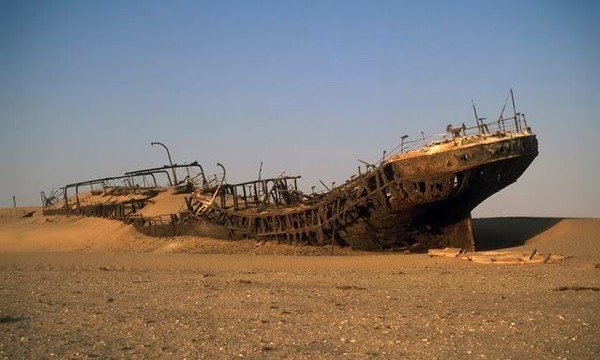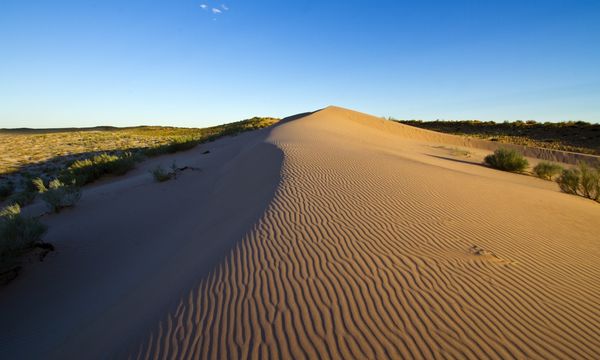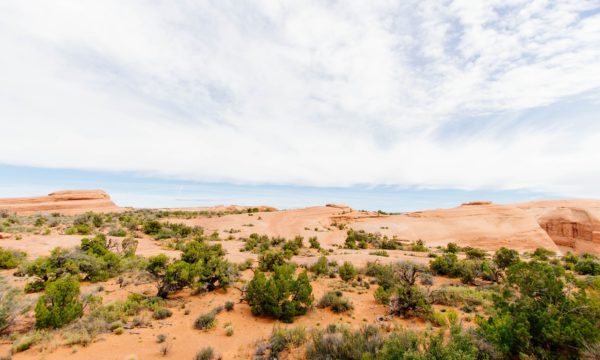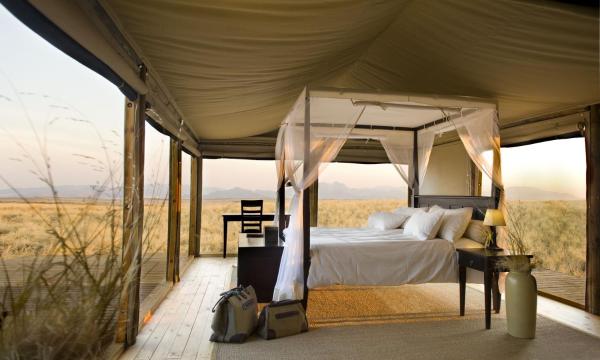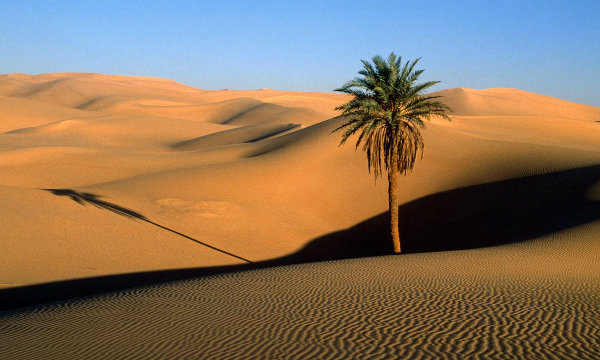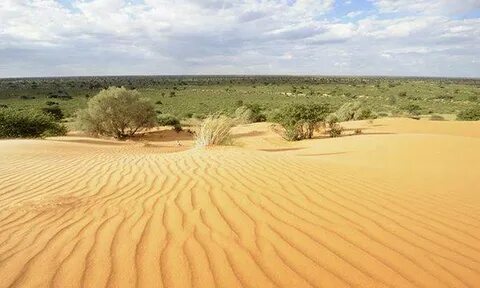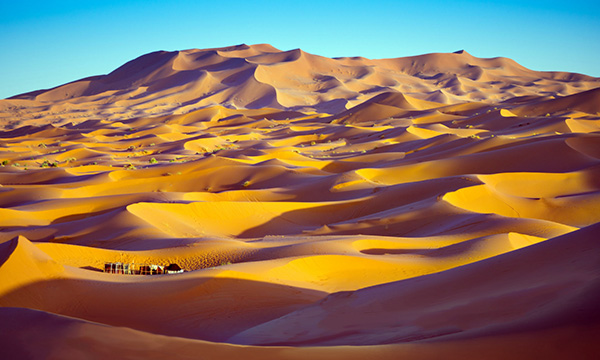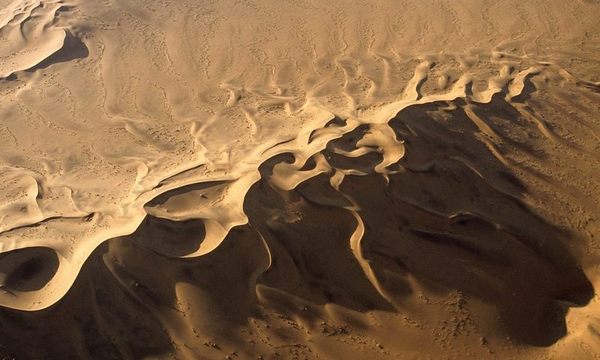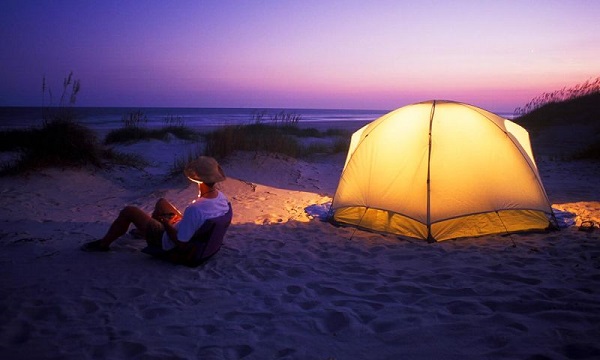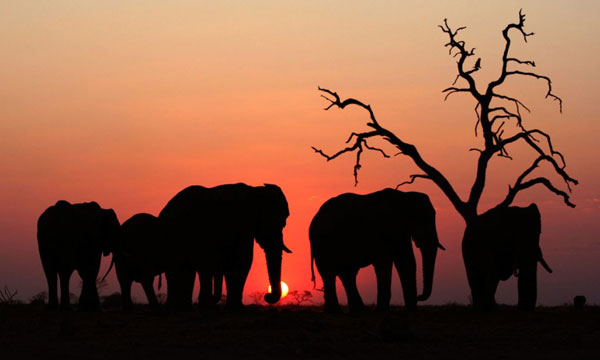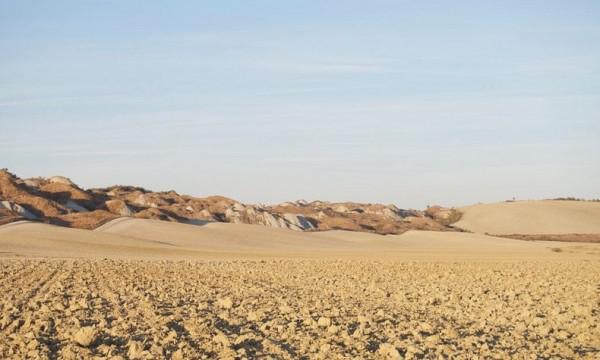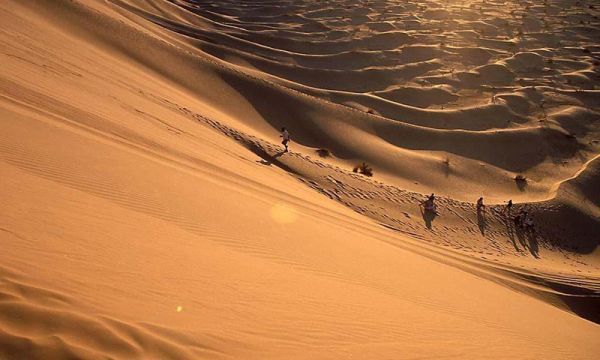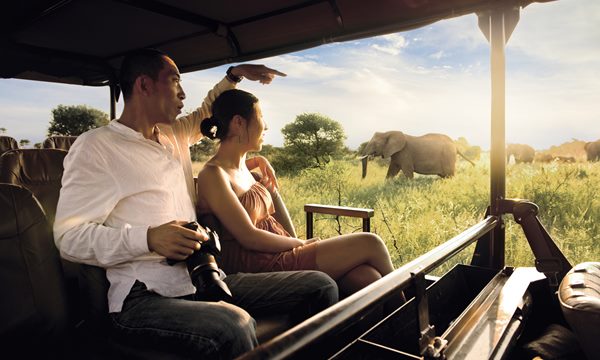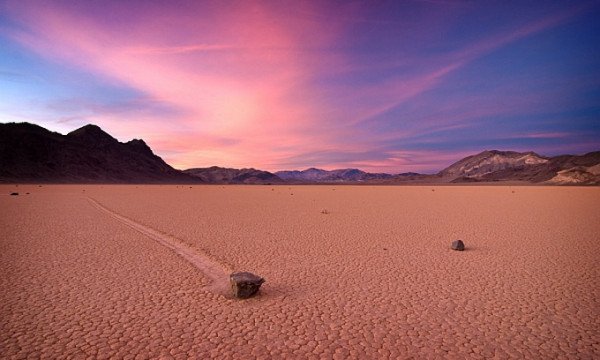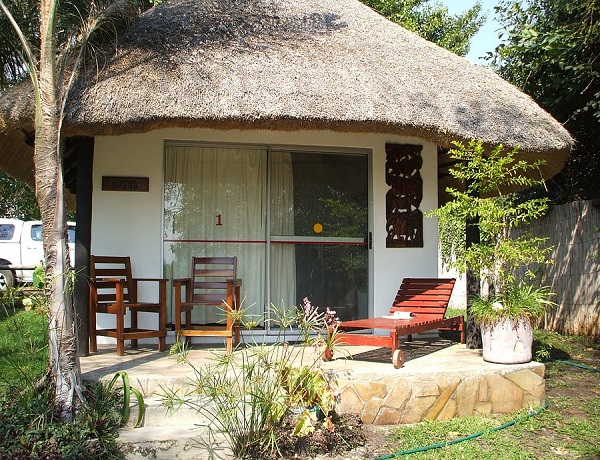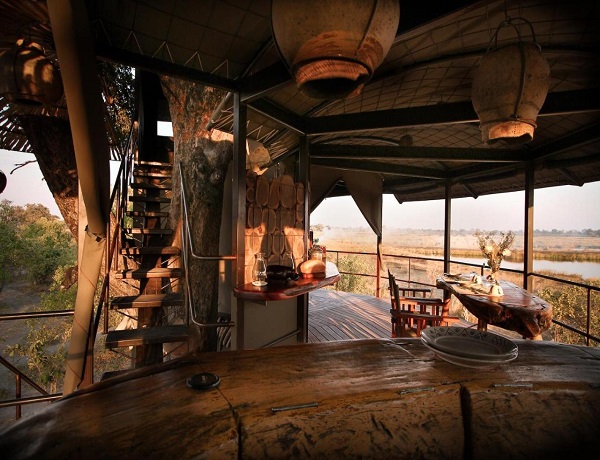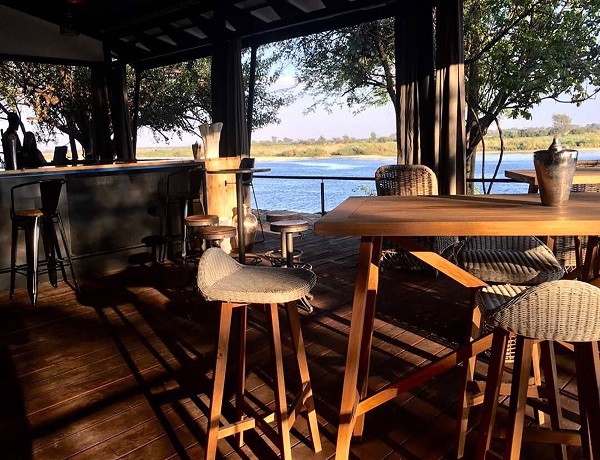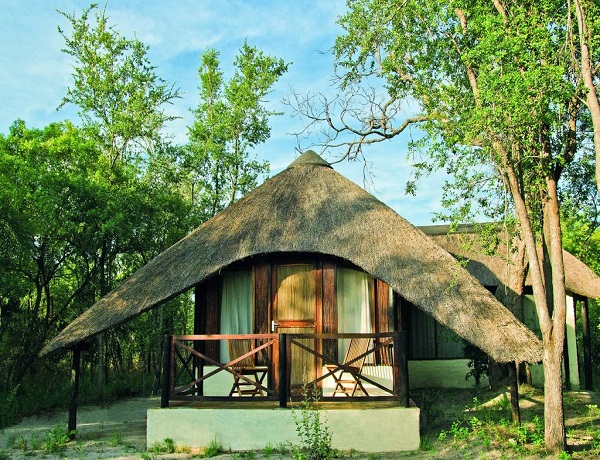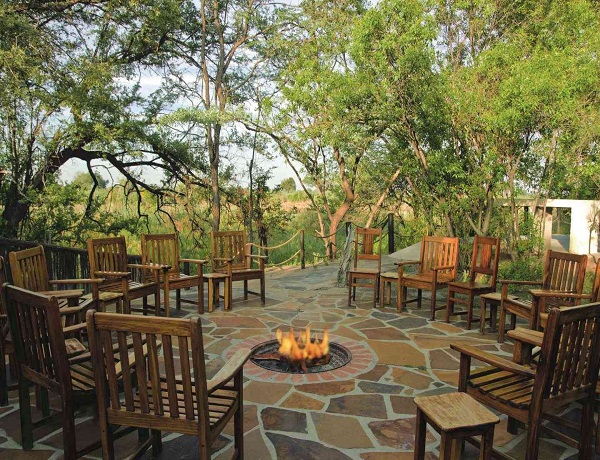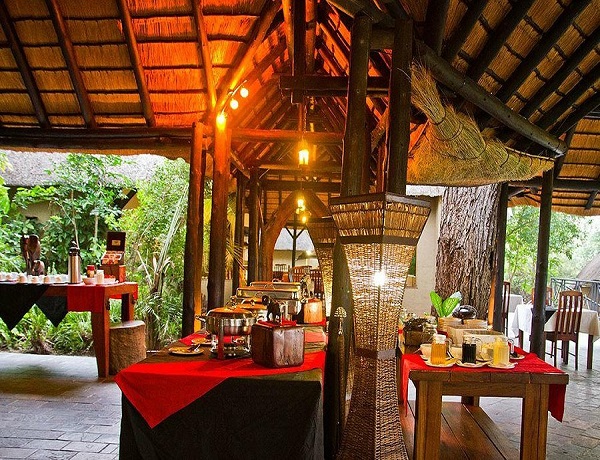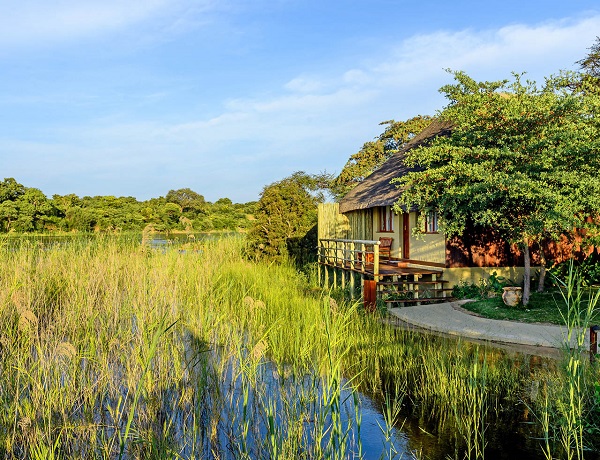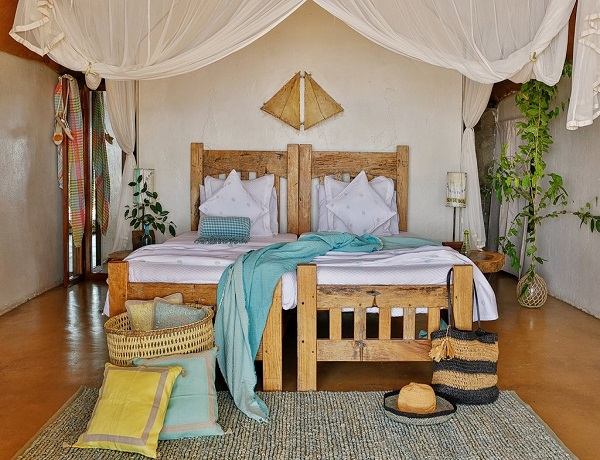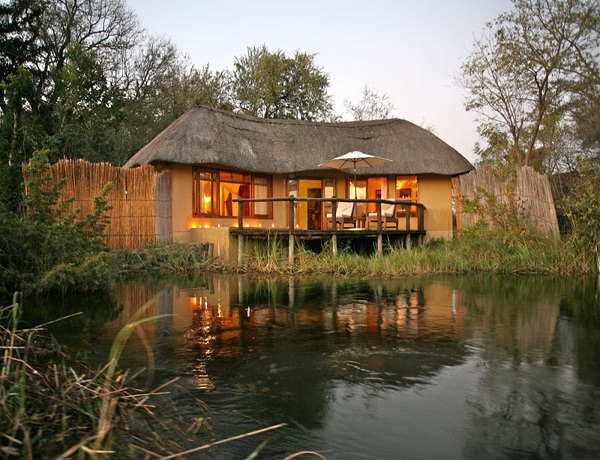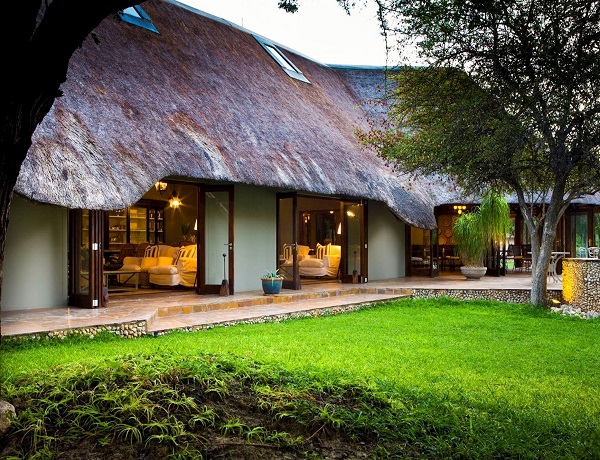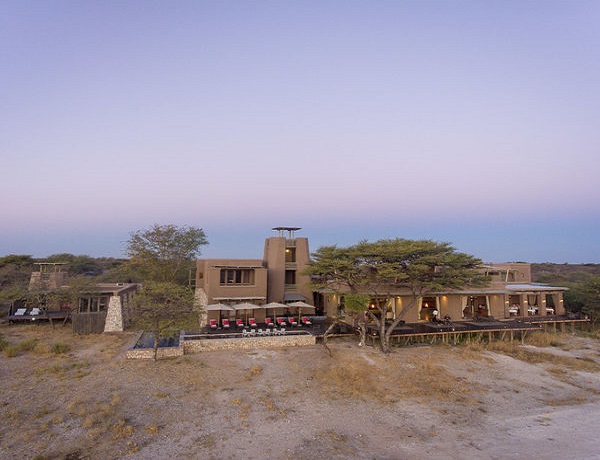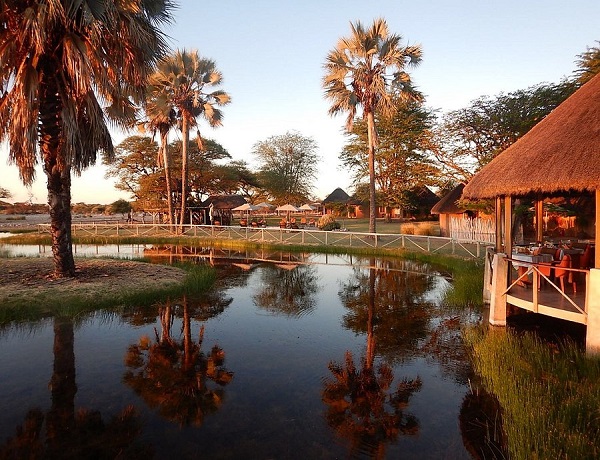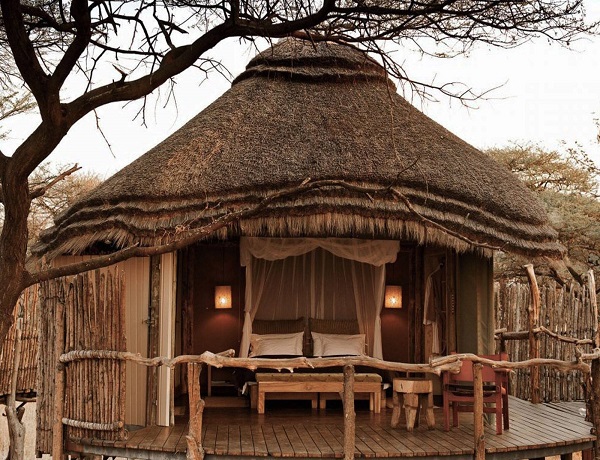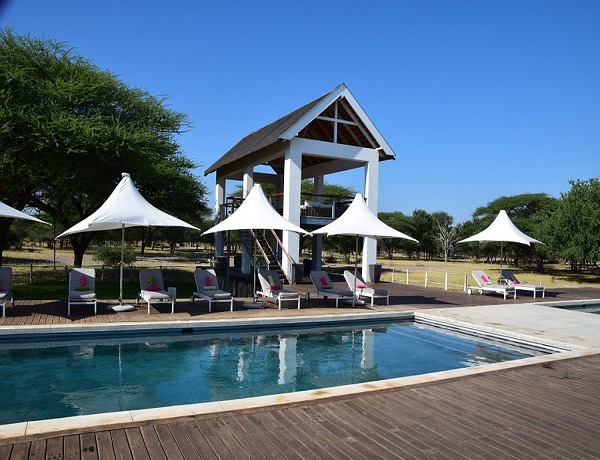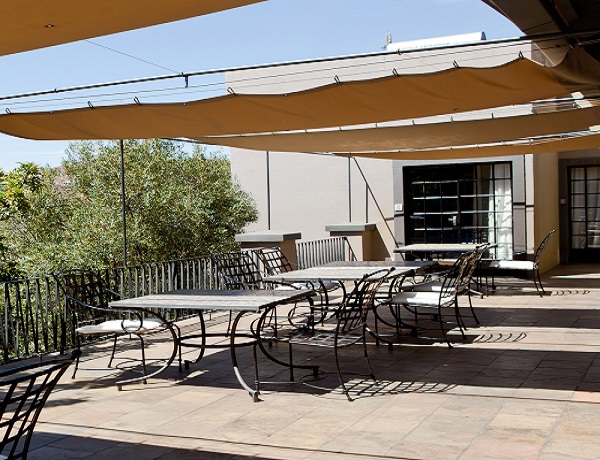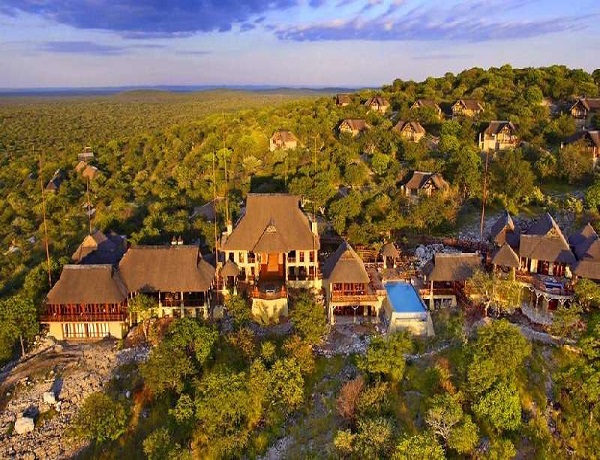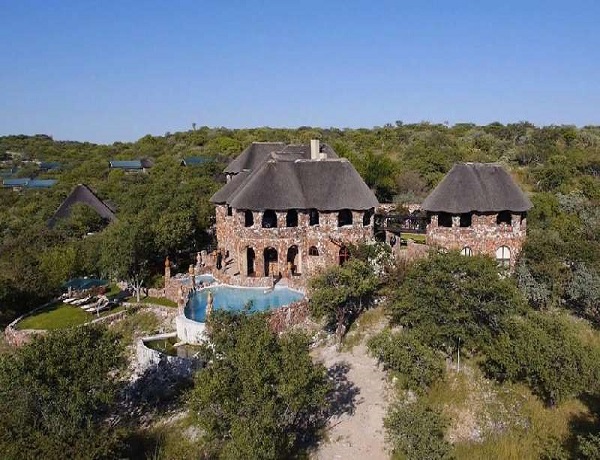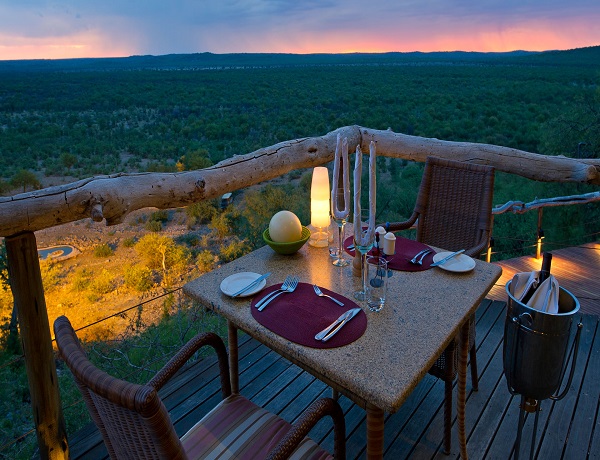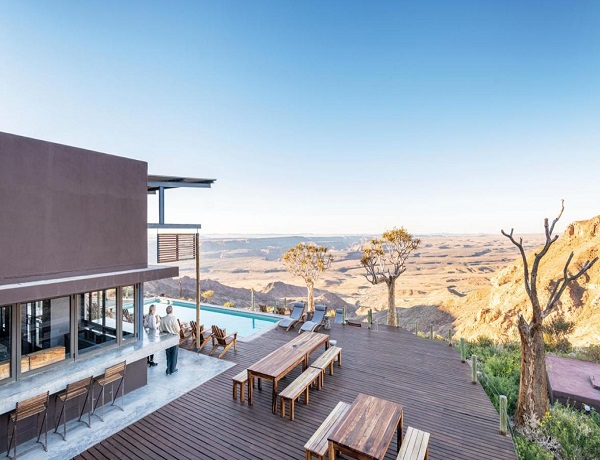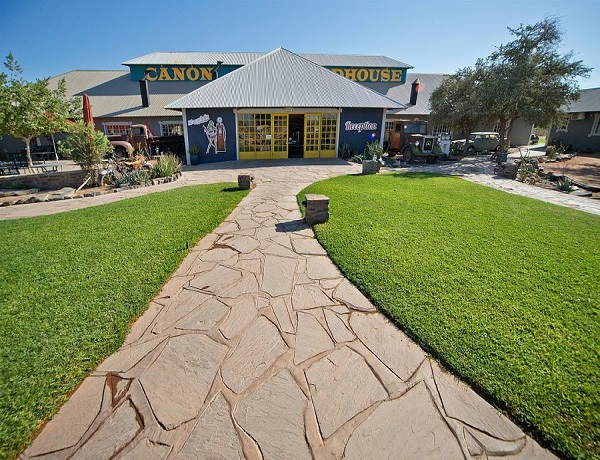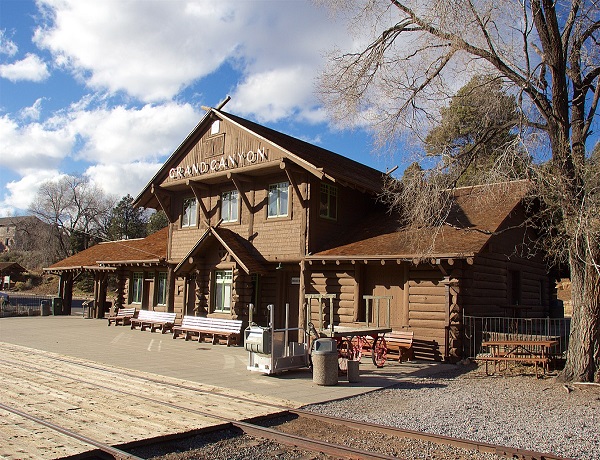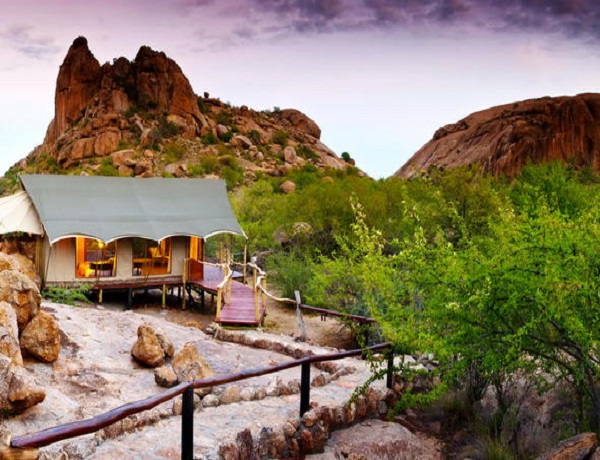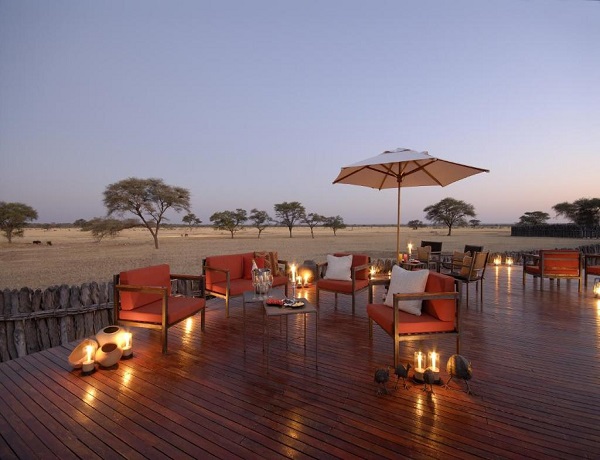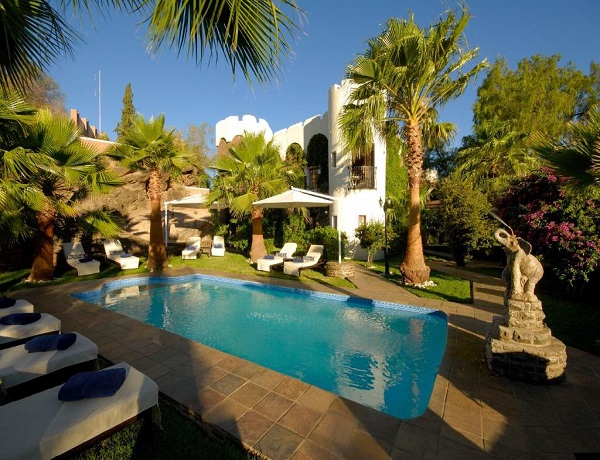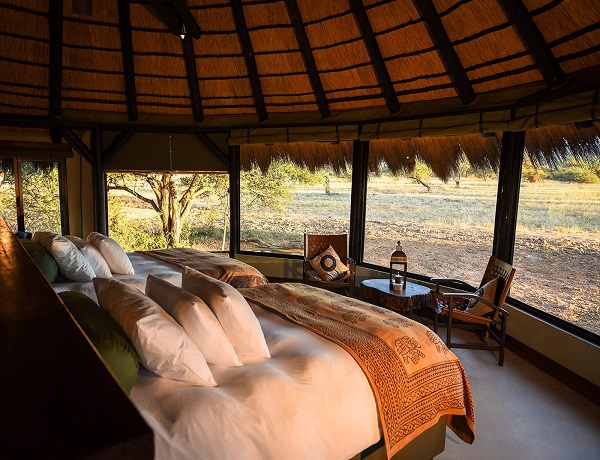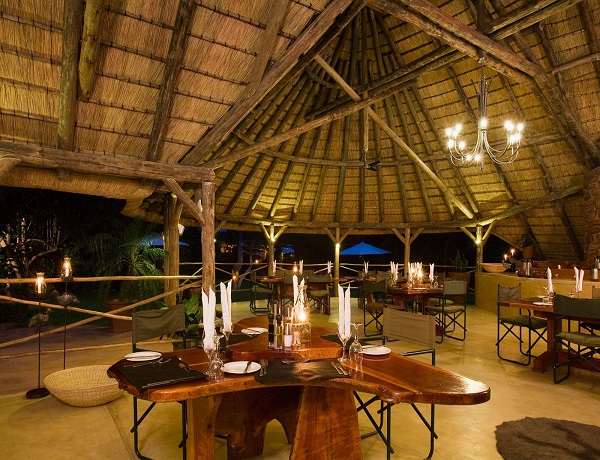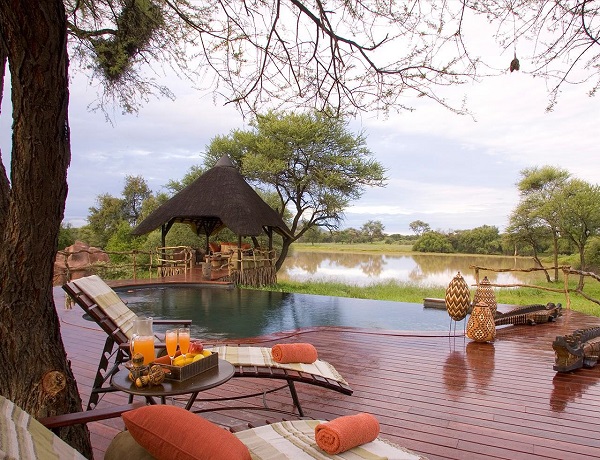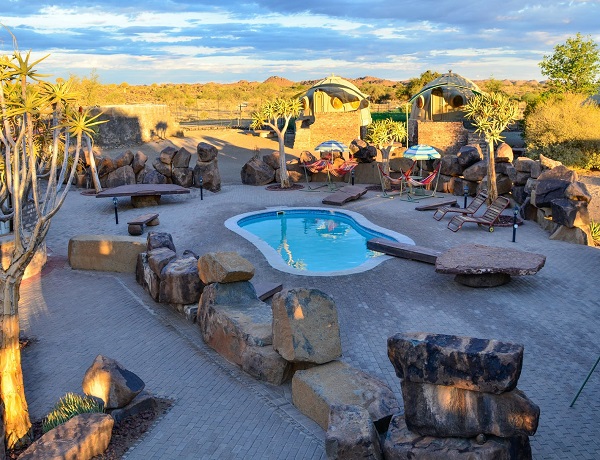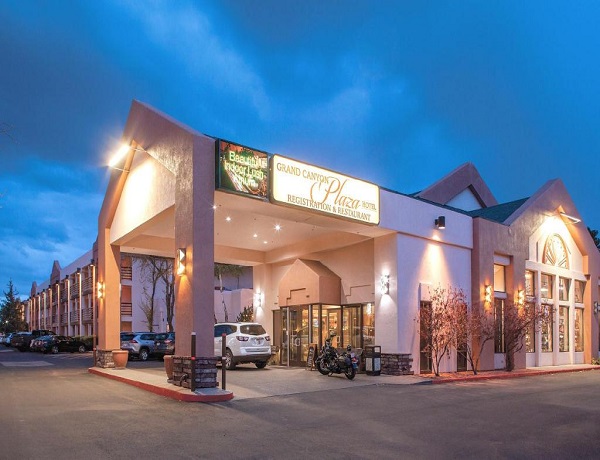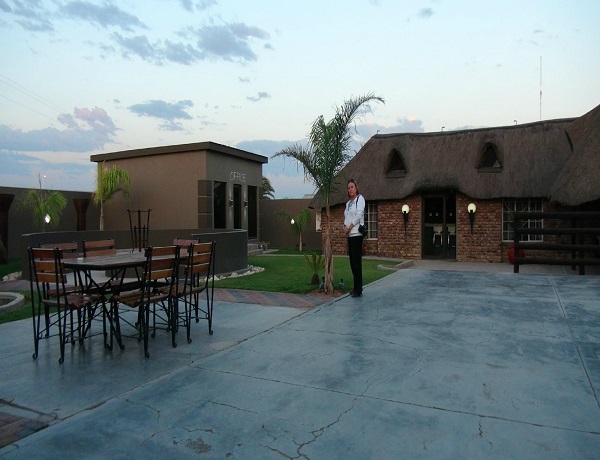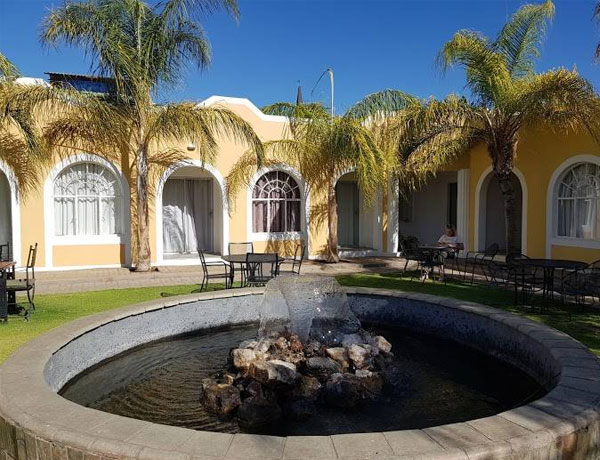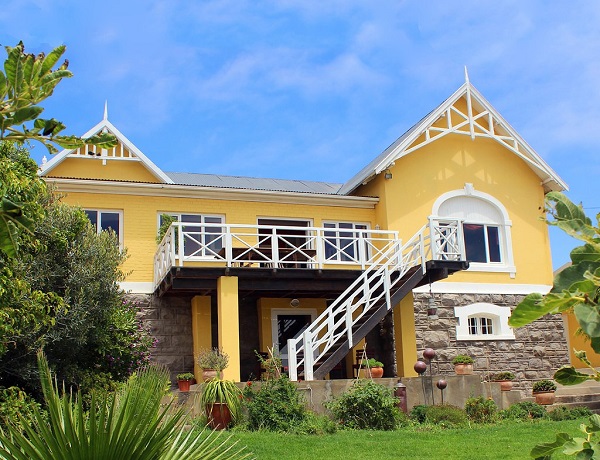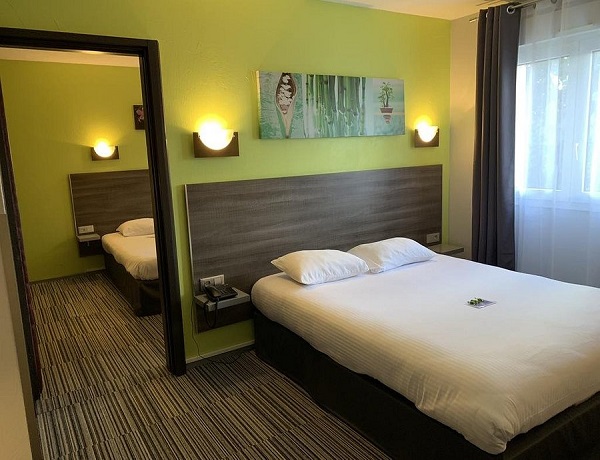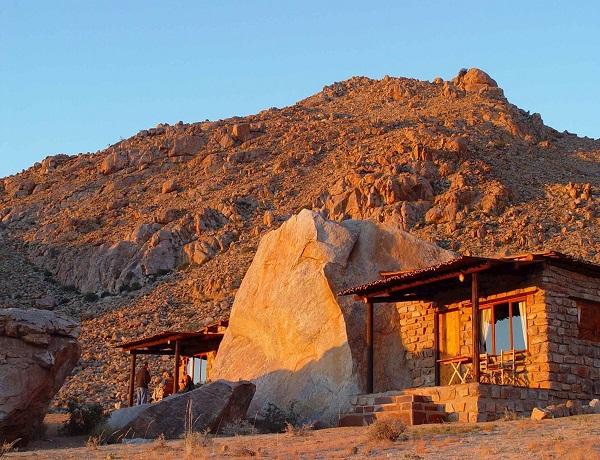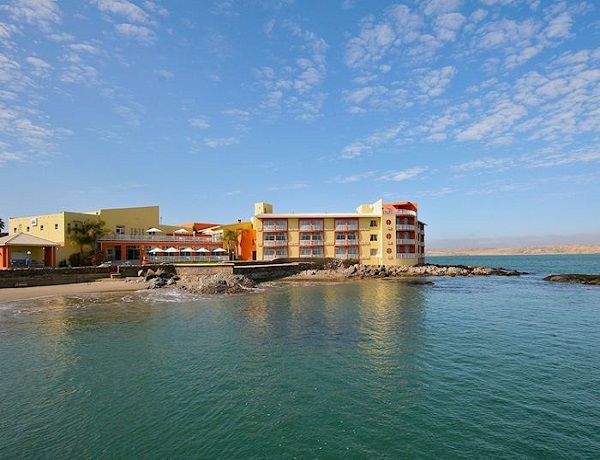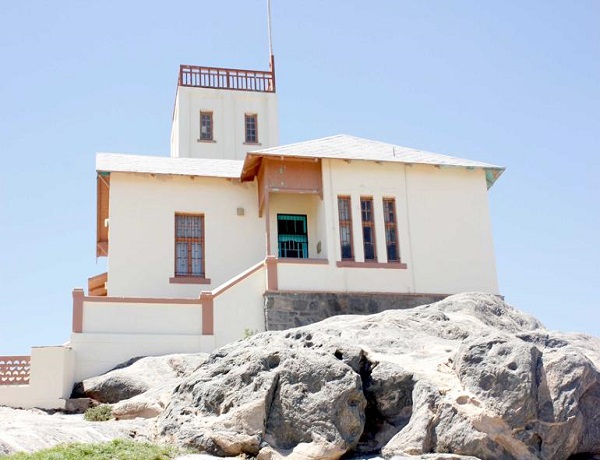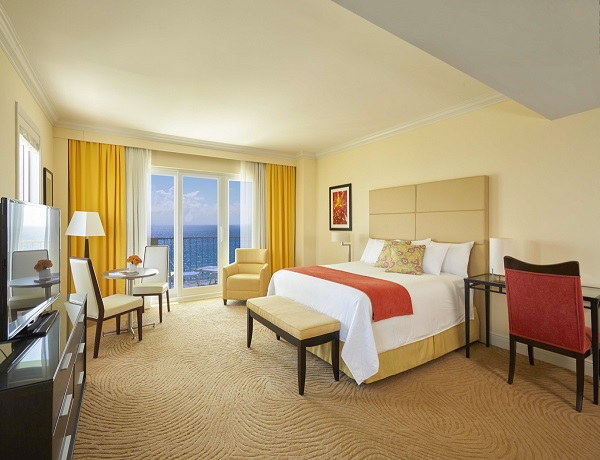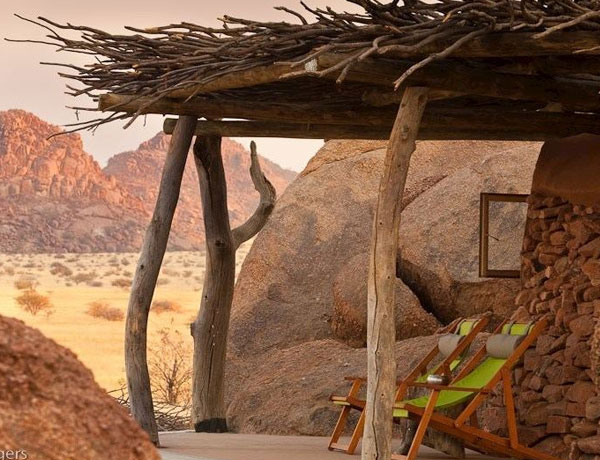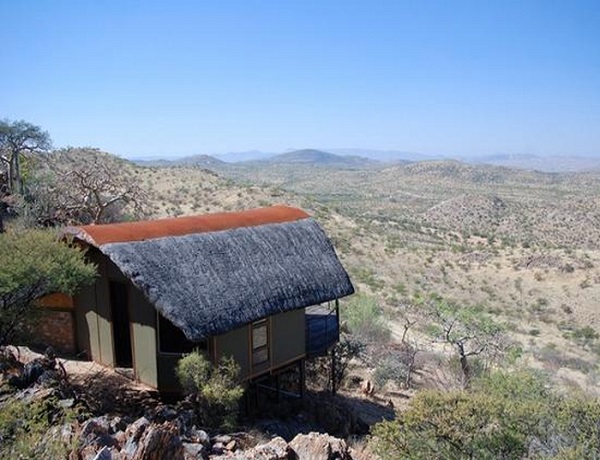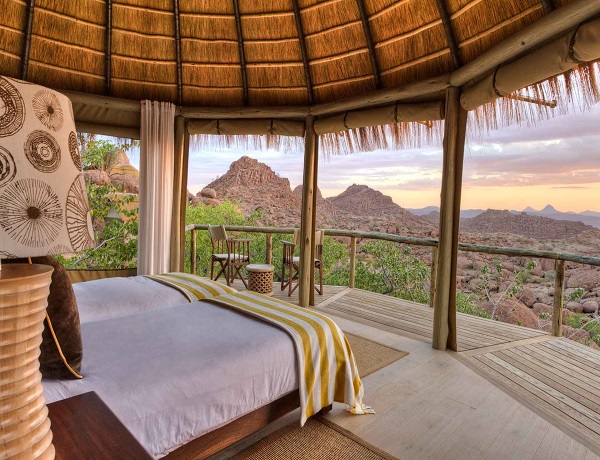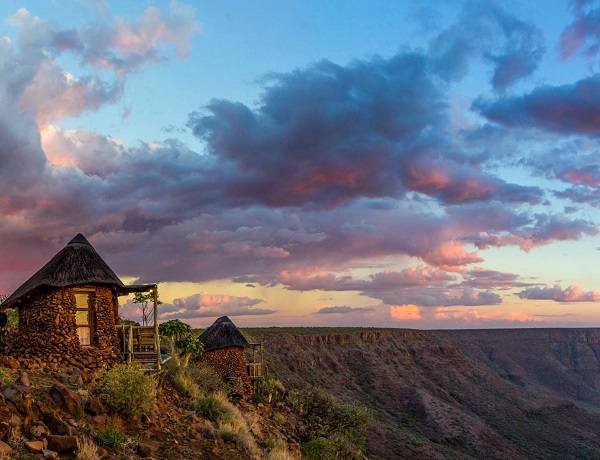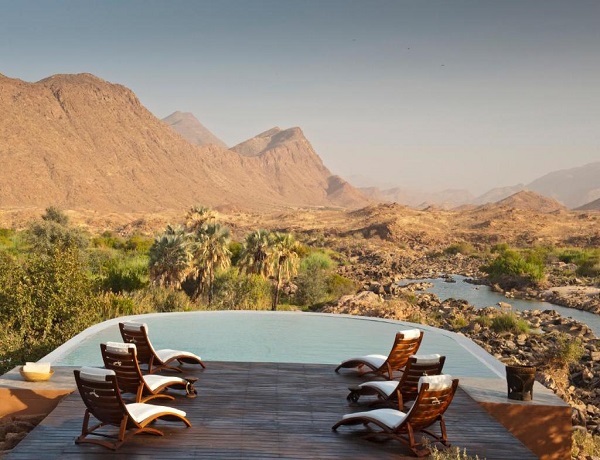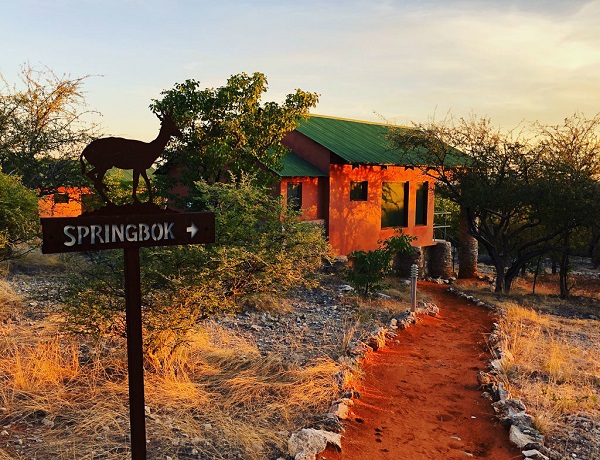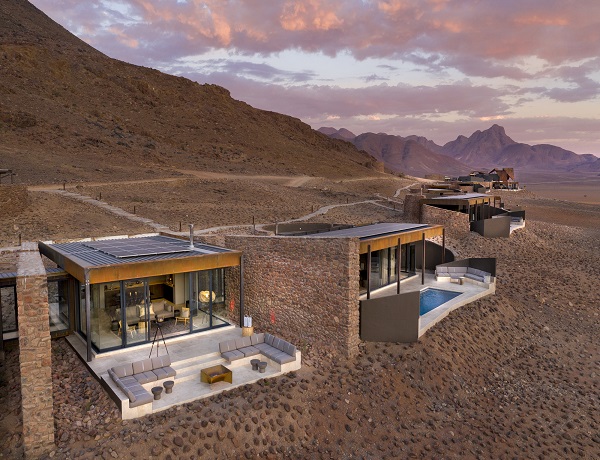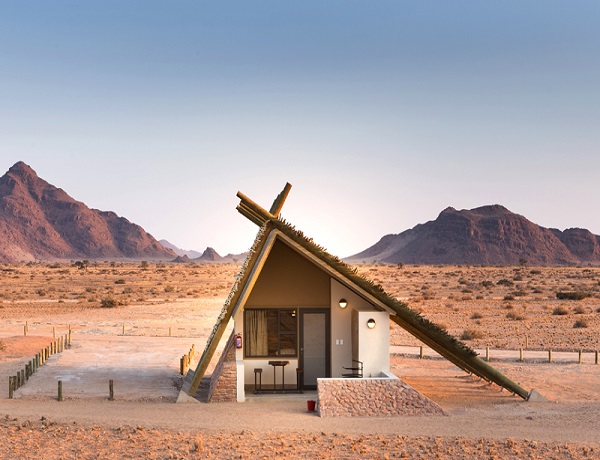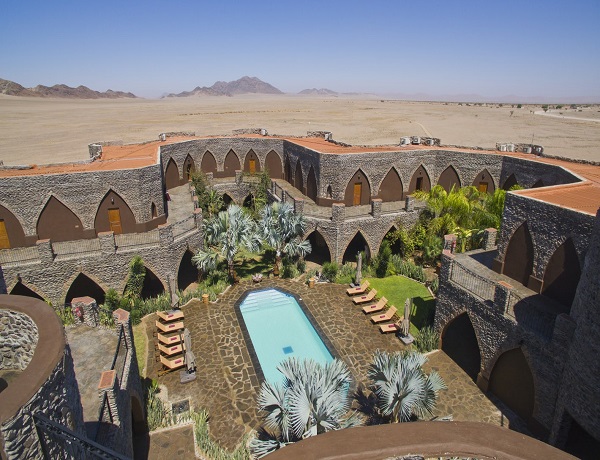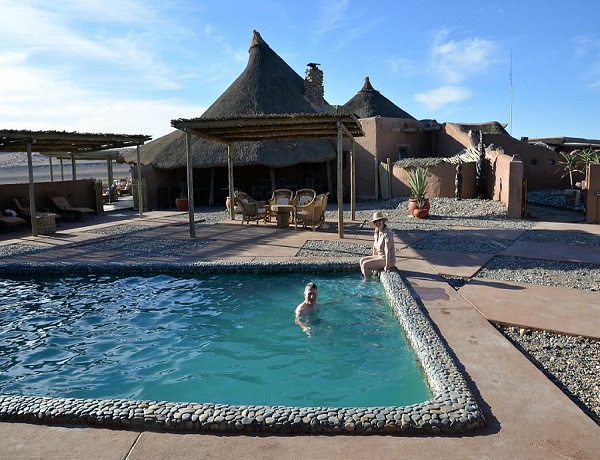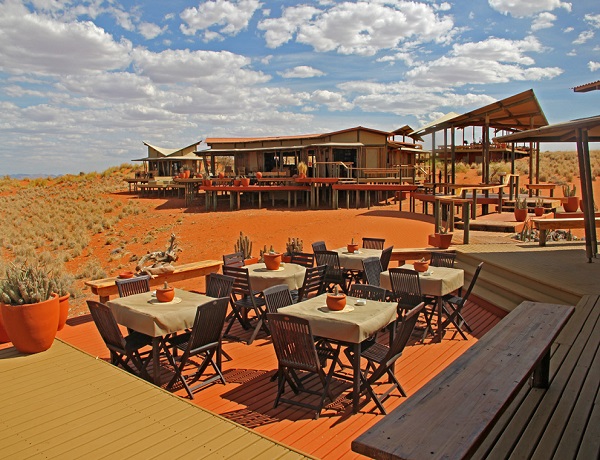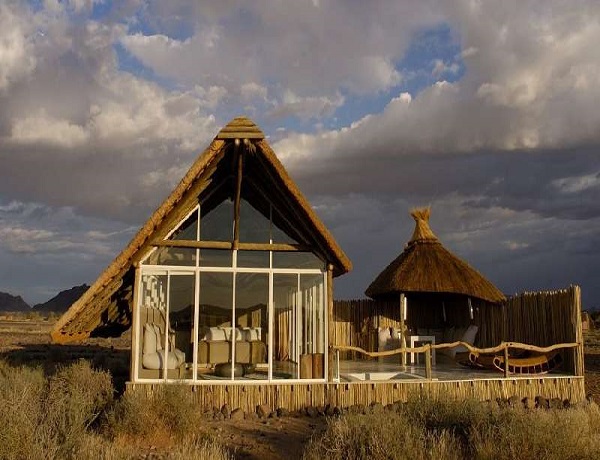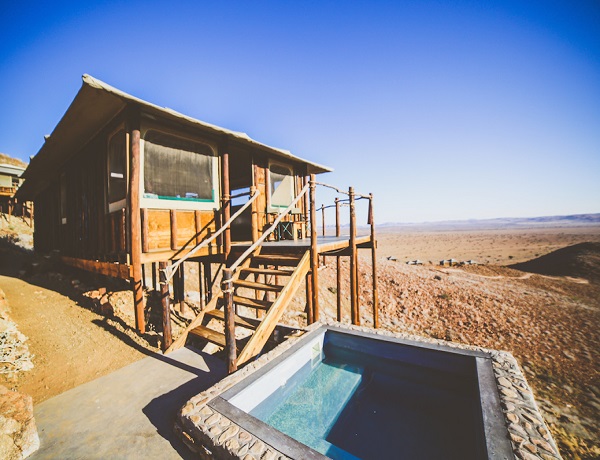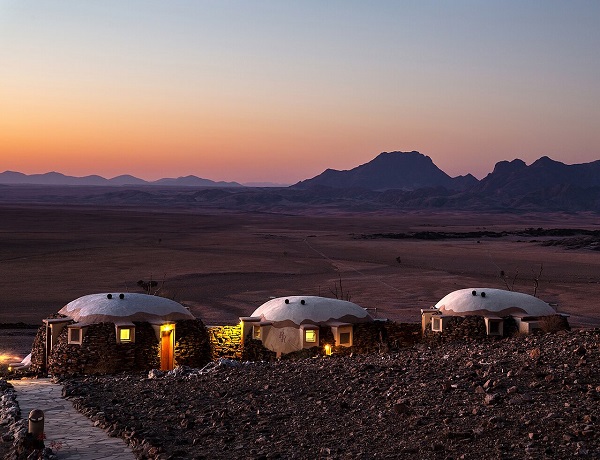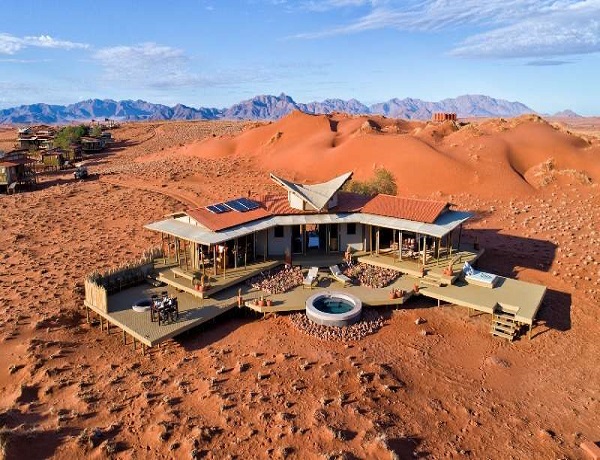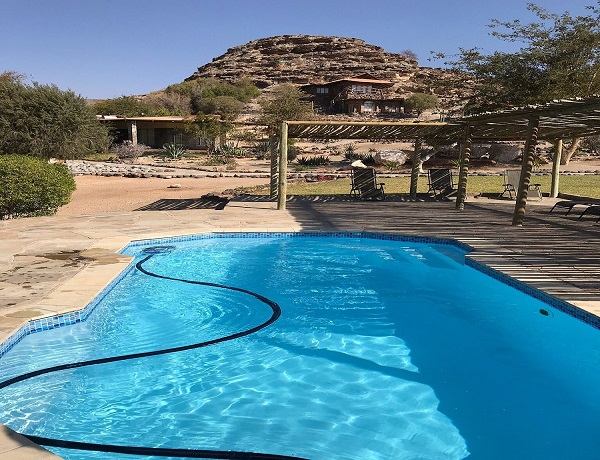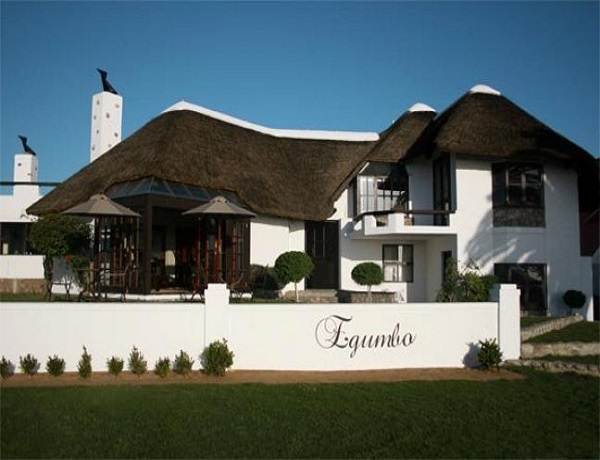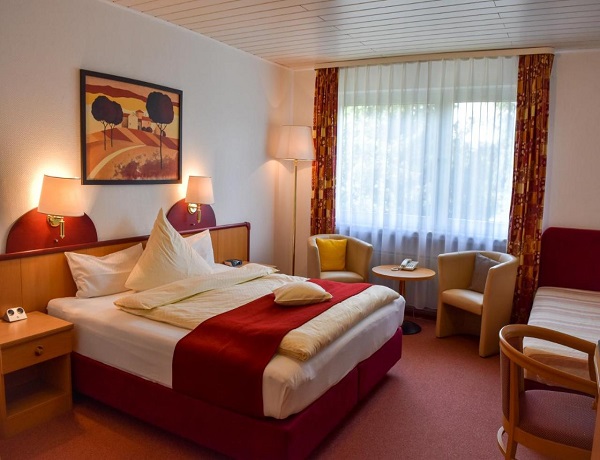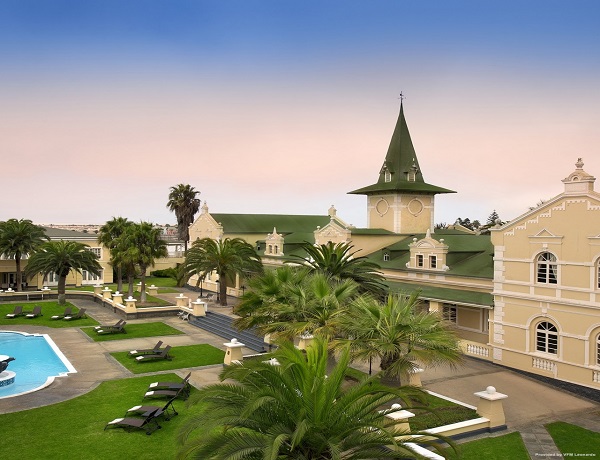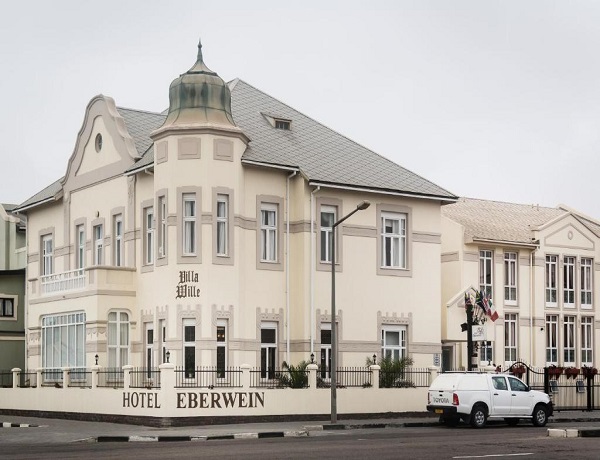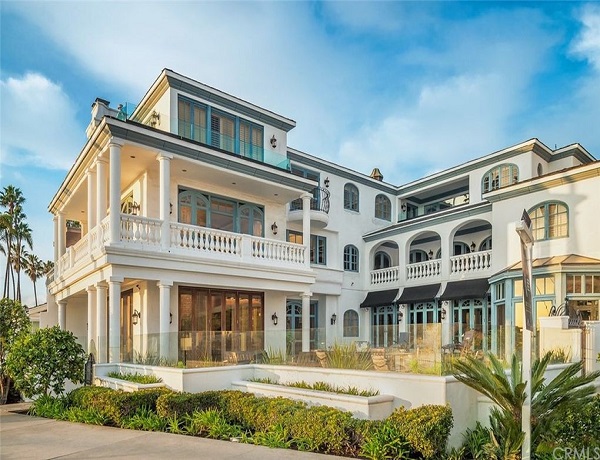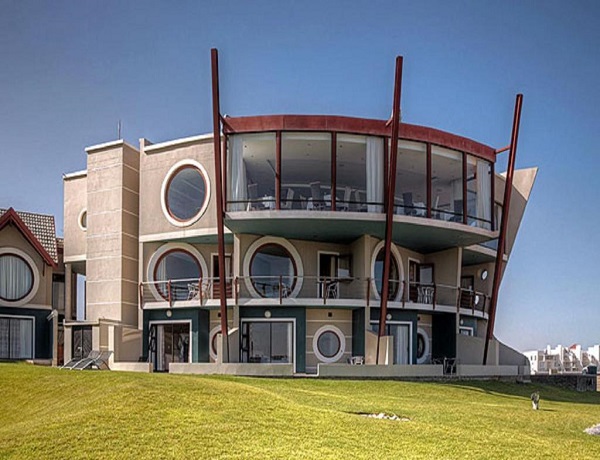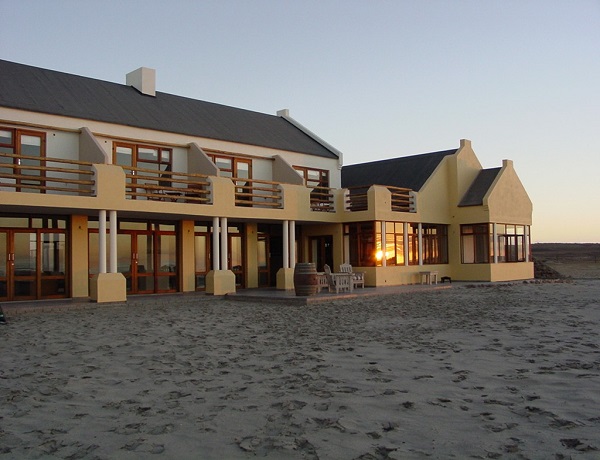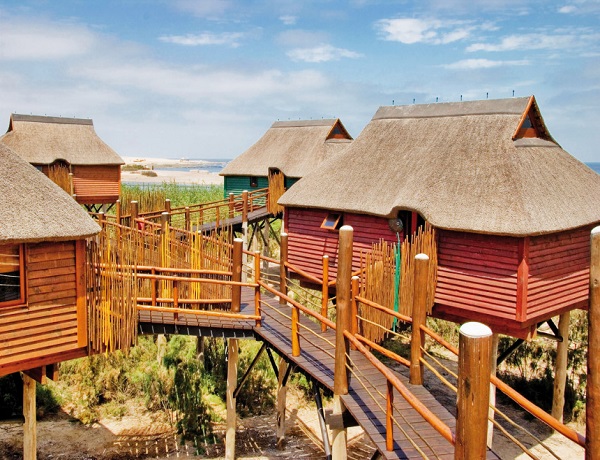Call Us
8:00am - 17:00PM
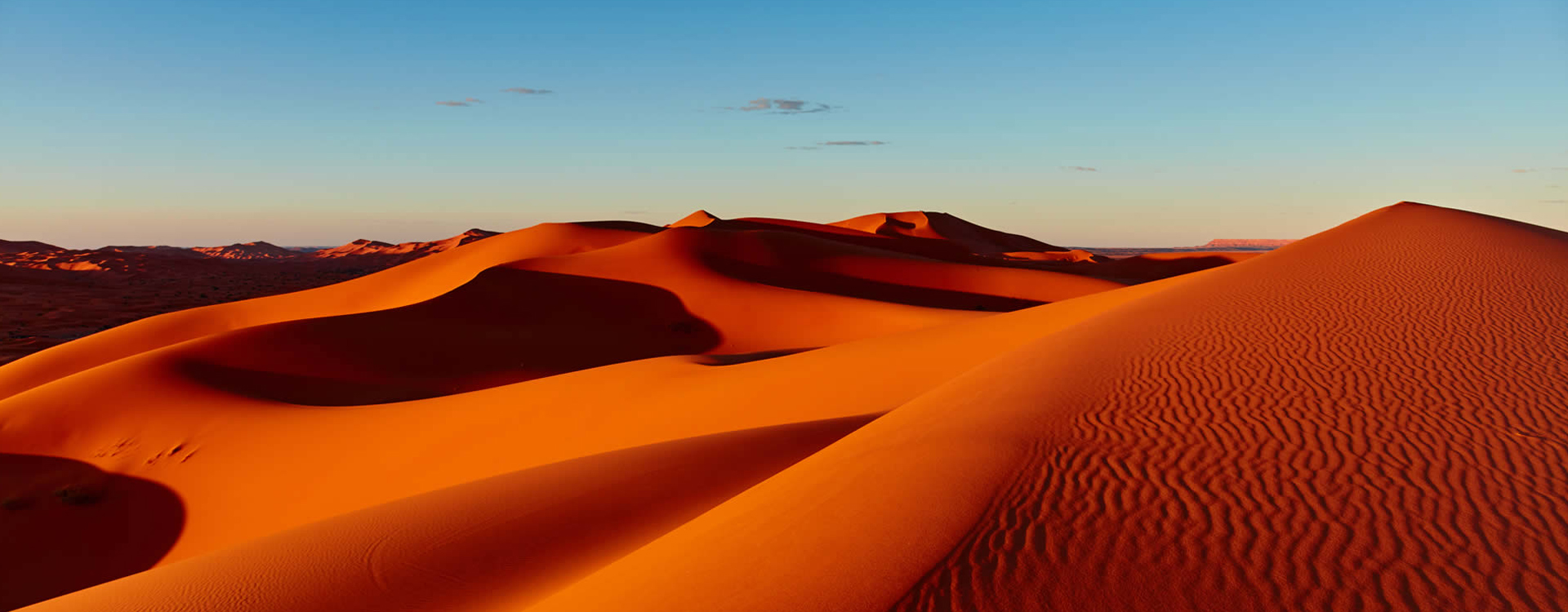
Namibia
About Namibia
Welcome to Namibia. Namibia is a big place – bigger than France - and there are long distances between key destinations such as the Sossusvlei dunes and Etosha National Park>. And then there are other amazing places like Damaraland and the Skeleton Coast to fit in as well as opportunities to combine a Namibia Safari with Botswana and Victoria Falls. If your upcoming dream holiday includes plenty of outdoor adventure and nature photography, then Namibia Destinations offer the ideal spot to explore. A Namibia Safari is ideal for wildlife vacationers, while its beautiful setup and easy-to-navigate roads offer superb holidays, which makes Namibia Africa is the right place for independent travellers.
Experience Namibia Attractions and Namibia Activities, which are limitless. Book your stay at one of the best Namibia Accommodations for a long lasting impact. To truly discover the Namibia Tourist Attractions, we’ll create a tailor-made Namibia Holidays. It helps to give you the options to choose between the variety of lodges and luxury tented camps, finding the perfect game viewing, locations and Things To Do In Namibia for you.
Interesting Facts

Namibia Things To Do - Safari, Hiking, Wildlife, Rhino Tracking

Namibia Tourism
- Full Of Adventure, Wildlife, History & Culture
Namibia Wildlife –
Oryx, Gemsbok, Plains zebra, Kirk's dik-dik
Namibia Safari Packages
- Top Most Safaris, Wildlife Tours & Activities
Namibia Safari Cost
- Between $125 and $1,500 per person per night
Namibia Travel Facts
- Location, Area, Terrain, Elevation & Many More
Namibia Travel Requirements
- Visa, Currency, Travel Insurance & Packing List
Namibia Accommodations
- Budget, Midrange. Luxury Camps & Lodges
Best Time To Visit Namibia
- Between July & OctoberNamibia In 60 Seconds
Virtual Trip to Namibia
Falcon Safaris is taking you on a journey to the limitless horizons, stark landscapes and fascinating Namibia Tourist Places. Get inspiration and essentials with our Namibia Travel Guide videos and visual stories for your next Namibia Safari, holiday, and vacation or simply enjoy and get tips about all the beauty in Namibia...
Namibia is yours to get in to. Curate your Namibia Travel experience and allow us to do the rest for you!
National Parks To Visit In Namibia
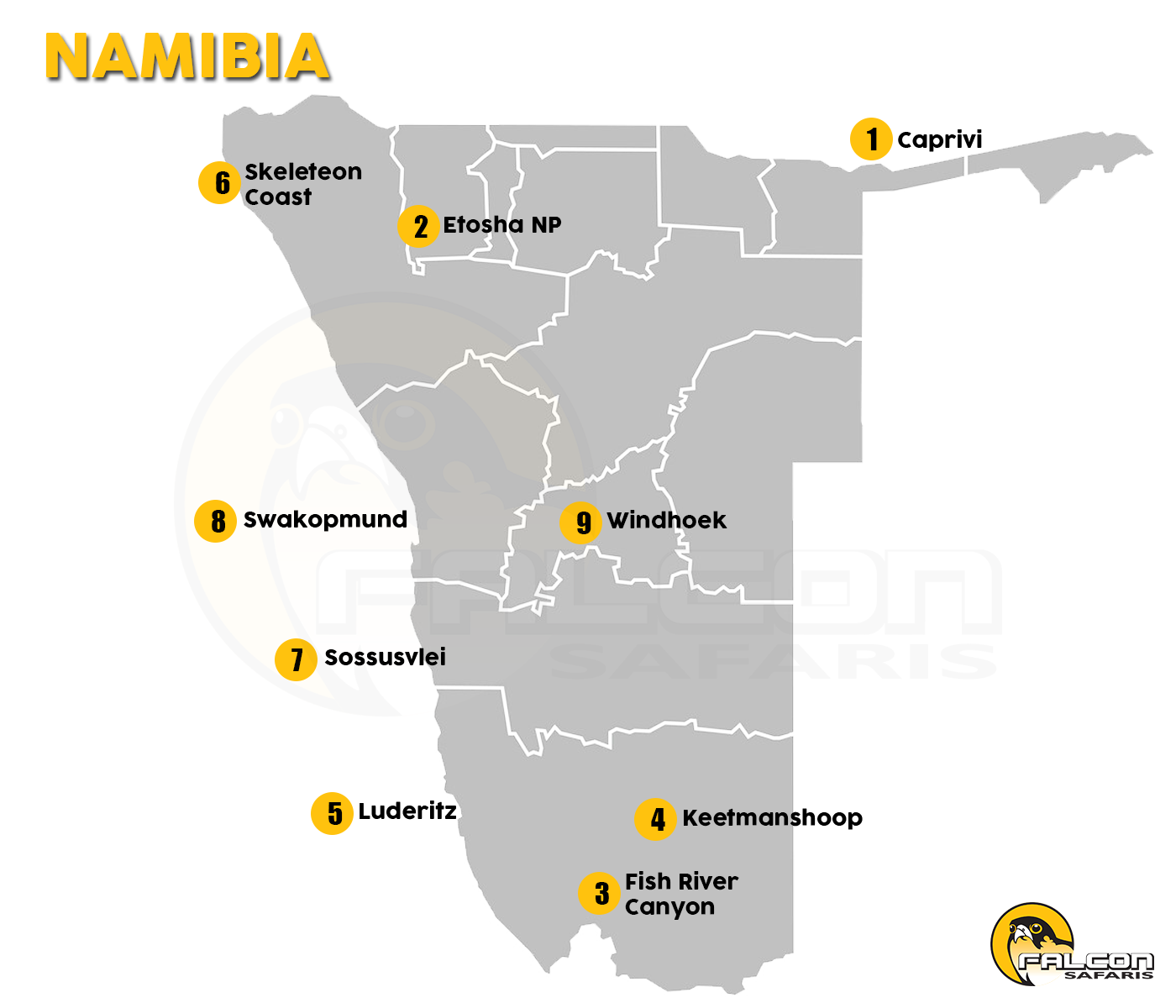
Namibia Tours and Safaris
We Think You’ll Love
Travel Guide For Namibia
We Think You’ll Love
Why Go to Namibia?
A blockbuster combination of beautiful landscapes that will make you feel like you’re on another planet, some of the best wildlife viewing on the continent, a host of fascinating desert-adapted plants and animals and jaw-dropping natural wonders make Namibia a country you’ll never forget.
Namibia’s scenery and sights are as astonishing as they are varied, ranging from the Namib – the world’s oldest desert – a vast and beautiful wilderness that covers much of the country in sandy plains, dune seas and savannah, to where dunes meet crashing oceans on the dramatic Skeleton Coast, to rugged granite mountains adorned with ancient rock art, the giant cracked salt pan of Etosha National Park and the dizzying depth of the Fish River Canyon.
Adventure is always just around the corner in Namibia. Whether it’s beginning a challenging 4×4 route in a remote area, hurtling down a sand dune on a board, or sky diving above the desert, there are endless ways to experience the country with some adrenaline-inducing fun.
To seal the deal, the network of well-maintained roads, excellent tourist infrastructure and a wide range of lodging options mean that Namibia is both one of the safest and easiest countries in southern Africa for self-guided travelling and a strong contender for this world’s best road tripping destination.
Best Time To Visit Namibia
The Best Time To Visit Namibia is from July to October. In this time, the Namibia Temperatures are just above 20°C and the chance of rain is low. This is also regarded as the best time for wildlife viewing. As it is the peak travel season — you will need to plan well in advance for your Namibia Trip.
- Winter: May to October (dry season)
- Summer: November to April (wet season)
- High Season: May to October
- Low Season: December to March
April and specially May are often lovely months in Namibia. Gradually dry, with a real freshness in the air, and much greenery in the landscape; at this time the air is clear and largely free from dust.
From June to August Namibia cools down and dries out more; nights can become cold, dropping below freezing in some desert areas. As the landscape dries so the game in the north of the country gravitates more to waterholes, and is more easily seen by visitors. By September and October it warms up again; game-viewing in most areas is at its best, although there's often a lot of dust around and the vegetation has lost its vibrancy.
November is a highly variable month. Sometimes the hot, dry weather will continue, at other times the sky will fill with clouds and threaten to rain – but if you're lucky enough to witness the first rains of the season, you'll never forget the drama.
Get the Best Time To Travel To Namibia for climate charts on the best wildlife-viewing times.
Flights & Getting To & Around Namibia
From the moment you reach at Namibia Airport, our Travel guides will be there to greet you. Also we ensure the smooth transfers from airport to camp, camp to camp, and back to your departure point, mainly the Airport.
There are frequent flights from Johannesburg and Cape Town to Windhoek or Walvis Bay. Regular flights also operate between Windhoek and Swakopmund/Windhoek and Etosha.
How To Get To Namibia - Most travellers arrive to Namibia by air, the majority Namibia Flights has been flying via Johannesburg in South Africa. But the only direct flight to Namibia from Europe is from Frankfurt, Germany, and there are no direct flights from either North America or Australasia.
- Flights from the US and Canada: None of the US or Canadian carriers offers direct flights to Namibia, though several US cities, such as New York (just under 15hr) and Atlanta (just over 15hr), have direct flights to Johannesburg.
- Flights from Australia and New Zealand: The most direct way to reach Namibia from Australia is to take one of the Qantas or SAA nonstop flights to Johannesburg from either Sydney (13hr) or Perth (around 11hr) and change there. From New Zealand the easiest route is via Sydney.
What To Pack For Namibia Safari
Packing is an important part of any holiday – and none more so than a Namibia Safari. There’s open air game drives, bush walks, and mountain hikes to think about, as well as swimming pools and soaring desert temperatures. And, of course, it’s all got to fit into a 15kg bag for those teeny tiny planes. But panic not – we’re here to help!
You want to go to Namibia Travel but what should be the Packing List For Namibia? We have put together the perfect Namibia Packing List for your Namibia Trip, both for safari and for a round trip.
Basically, less & important things is more compared to the huge list. The important documents such as passport and Namibia Visa may not be missing. With light luggage it is easier to travel. Also, with a light suitcase on the international flight, there is more space for travel souvenirs. With our Namibia Packing List you are definitely ready for your next Namibia Holiday!
Visa & Passport Requirements For Namibia
Pre-planning a trip to another country can be taxing, and the visa & Passport part of that planning can be the biggest challenge of all. You can always outsource the organization of your visa to a travel agency or specialized company, but in many instances that means almost doubling the price of the visa.
To help you out in the planning stages of your Namibia Trip, here is a quick guide to Visas For Namibia.
A Namibia Visa is permission to enter and stay in Namibia for a short period of time. It takes the form of a stamp in the traveller’s passport which is issued by the appropriate Namibian authority. For those who require a Namibia Travel Visa entry is not permitted without one so they must be applied for and obtained prior to entry.
Travellers to Namibia must have a passport valid for at least 6 months beyond the proposed stay, as well as enough pages for entry and exit stamps. In addition to the Namibia Visa, each traveller must have a valid return air ticket.
All visas are valid for up to three months from the date of issue for stays of up to three months from entry. Extensions are also given for a further three months, available from the Ministry of Home Affairs in Windhoek.
Namibia Food
Regardless of the ethnic group they belong to, Namibian People generally love their meat. It’s the main Namibia Food that you’ll find in the country!
If you’re as loving about barbecues, stews and curries, try some of the Namibia Cuisine when you visit the country.
Exotic meats, vibrant colors, and indigenous traditions all define Namibian Food, one of Africa’s most diverse and unique cuisines.
Nambia is a proud and passionate nation, and that very much shows in the country’s food. There’s richness, heat, and plenty of flavours packed into a fascinating blend of indigenous dishes and European influence.
The 15 Popular Namibian Food includes….
- Oshithima (Maize or Mahangu Pap)
- Oodhingu (Dried Meat)
- Omboga (Dried Wild Spinach)
- Omagungu (Mopane Worm)
- Potjiekos
- Zambezi Bream (Fish)
- Biltong
- Kapana (Grilled Beef)
- Fat Cakes
- Oshigali (Beans Puree)
- Oshikwiila (Millet/Mahangu Pancake)
- Boerewors
- Matangara (Beef or Goat Tripe)
- Marathon Chicken (Home-Grown Chicken)
- Owawa (Wild Mushroom)
Namibia Wildlife
Namibia is renowned for its otherworldliness, with epic landscapes and unique natural phenomenon, but Namibia Wildlife is not to be missed, with some incredible animal spotting opportunities right across the country.
Namibia in southwest Africa is home to both the Namib and Kalahari deserts, and a plethora of rich and diverse wildlife. Some of the Namibia Animals which are common include zebra, oryx (gemsbok), elephant, hyena, wildebeest, and the unique Kirk’s dik-dik to name just a few. There are over 1500 endemic species of insects living in Namibia. There are over 200 species of reptile found in Namibia, with nearly 60 that are native and found nowhere else. That is a lot of unusual Namibia Wildlife! Some of these animals are located in wildlife reserves.
Namibia is also home to a unique population of elephants that have adapted to the arid climate. Found mostly in the northwest part of the country, these "desert-adapted" elephants can go for days without drinking water by surviving on moisture obtained from the vegetation they eat. Although not a different subspecies of savannah elephants, they have several adaptations to their desert environment, including larger feet, which make it easier to walk through sand, and smaller herd sizes, which puts less pressure on their food and water sources.
Is Namibia Safe?
Yes Namibia is a safe place to Travel. Namibia, with its incredible landscapes that seem to go on forever and amazing opportunities to see some of the most quintessentially African wildlife you could ever imagine clapping eyes on, is a dream for any nature lover. This is safari country, people.
Although Namibia is often regarded as one of the safest countries in the whole of the African continent. This country have relatively small population size, or the good governance the country has enjoyed over the past years.
With Falcon Safaris, you are in safe hands – your Namibia Safety is our top priority. If you have any questions about Safe Namibia Travel, our experts are ready to advise you.
To help ensure that your trip goes as smoothly as it can possibly go, we have created this epic safety guide to Namibia. Filled with tips on how to travel around the country, how to call a cab, whether you should rent a car, and much more, we’ve got you completely covered.
Namibia Currency
The Namibian Dollar is the official currency of Namibia. However, the South African Rand can also be used at an identical rate to the Namibian Dollar.
Please note that while South African Rand is used in Namibia, Namibia Currency is not legal tenders in South Africa, so make sure you have used or exchanged them before you leave Namibia.
Many hotels, lodges and restaurants in towns will accept credit card payments, but you do need carry enough Currency In Namibia with you to cover yourself for places that don’t accept cards.
You’ll also need cash for park entrance fees and tips. Few petrol stations will accept cards for payment of petrol, and while there are usually ATMs at bigger petrol stations, many small stations will not have an ATM, so have enough currency in Namibia for filling up with petrol in rural areas.
Euro, British Pounds, US Dollars and other major currencies may be traded locally or in advance of departure. In addition, exchange facilities are available in the various offices of change and banks in the major cities of ATMs. It is best to request bank notes in smaller denominations, as it can often be difficult to get a change from large notes, and smaller notes are handy for smaller transactions.
Namibia Culture
Namibia is truly unique, influenced by various cultures during colonization and now reborn from the shadows of Apartheid in 1990. What has emerged is a true sense of unity in diversity, the coming together of at least 11 major ethnic groups, each celebrating their past while working together toward the future. You will notice this in dress, language, art, music, sport, food and religion. There exists a wonderful collage, but first and foremost, Namibians are proud to be Namibian. And for good reason.
Namibia’s sparse population of only 2.4 million people makes it one of the most sparsely populated countries in Southern Africa. The San Bushmen are descendants of Africa’s Stone Age tribes and are considered Namibia’s oldest inhabitants. Confined to the desert and semi-desert regions of Namibia, their survival skills in such a harsh climate are famous the world over.
Bantu-speaking populations include the Himba, Ovamba and Herero people, who are also enormously adept at living in the stark landscape of Namibia.
Namibia Culture offers an array of diverse population. Learn more about these fascinating Namibia People and their cultures on your Travels To Namibia.
Namibia Travel Insurance
It’s advisable to get full travel insurance that includes medical coverage for your Namibia Vacation. Make sure that your medical insurance covers you for medical evacuation, as well as any adventure activities you may want to do, such as skydiving, hiking, mountain climbing, sand boarding and quad biking. It’s a good idea to get comprehensive insurance on your rental car too.
But, before you create your itinerary, make sure you cover your trip with a comprehensive Namibia Travel Insurance plan. A travel insurance policy not only ensures you a worry-free trip but also protects you from unnecessary hassle in the event of any mishap.
If you purchase this policy, you will receive the following benefits.
- Compensation for lost or delayed baggage.
- Cover against illness, personal accidents, and medical expenses.
- Loss of passport.
- Cover for trip delay.
- No medical checkups until the age of 80 years to receive a policy.
- Cover for up to 182 days, extendable to another 183 days.
- Cashless medical treatment at your hospital.
Namibia Safari Cost
Typically, a two week self-drive Namibia Holiday, excluding international flights, will start at around US$4000.00 / £3200.00 per person. So Namibia Safari Cost is something between US$ 1200 - US$ 2000 per person.
Prices for lodging in Namibia range from N$140 (US $12) per person in a campsite, N$200 (US $17) for a budget guesthouse, N$700 (US $60) for a B&B room to N$1000 (US $85) per person for a chalet in one of the camps in Etosha National Park, N$1500 (US $128) per person in a mid-range safari lodge and around N$7000 (US $600) per person for a night in an all-inclusive luxury safari lodge.
Renting a sedan car will cost around US $42 per day (although getting comprehensive insurance will cost a bit extra), while the cost of renting a 4×4 starts from about US $80 per day. Petrol costs around N$10 (US $0.86) a litre.
A meal for two people in a mid-range restaurant will cost around US $30.
Entrance fees for some national parks are N$80 (US$6) per person per day while other parks are N$40 (US$3).
The Namibia Safari Activities Cost varies greatly, ranging from N$85 (US $7) for a guided tour of Kolmanskop ghost town and N$650 (US $55) for a half-day guided nature walk on the sand dunes near Swakopmund and going up to N$6500 (US$557) per person for a hot air balloon flight.
best month to Visit Namibia
We Think You’ll Love
Peak
Low
Mixed
Namibia Safari in January
January is midsummer in Namibia, when temperatures in most of the country are extremely hot, and some parts of Namibia receive heavy afternoon showers. The summer rains mean the foliage in Etosha National Park is at its greenest, making for beautiful photos and good birdwatching but wildlife spotting is more challenging than in the drier months. January is a good time to visit the Skeleton Coast as the weather is mild and sunny.
It’s not advisable to travel to the Zambezi Region during the rainy months, as the area receives the most rainfall in Namibia and roads may be flooded. There’s also a higher risk of malaria.
Namibia Safari in February
February is the wettest, hottest and most humid month in Namibia. It’s the low season, which means lower room rates and fewer other travellers. It’s tricky to spot wildlife in Etosha but it is birthing season, so if you’re very lucky you’ll get to see some newborn antelope calves.
Namibia Safari in March
The rains start to ease off in March in Namibia but it’s still hot and humid. It’s still a good month for birdwatching but finding wildlife in places such as Etosha remains difficult due to the lush vegetation.
Namibia Safari in April
April is a lovely time to visit Namibia especially if you’re a photographer: the weather is mild, the skies are clear and the landscapes are green. It’s still the low season so you can get good deals on room rates.
Namibia Safari in May
May is a good month for Namibia travel, with moderate temperatures, green vegetation and clear skies. If you want to do a serious hike, the Fish River Canyon hike opens for the winter season in the beginning of the month.
Namibia Safari in June
Desert temperatures drop off in June: while day times are pleasant, nights can be freezing. Without rain, the landscape has become much drier, and vegetation sparser, making this a good time for a visit to Etosha, where it’s just started to become easy to spot animals congregating around waterholes.
Namibia Safari in July
July is the driest month of the year, so it’s an excellent time to visit the game parks, especially Etosha, where it’s easy to see hundreds of animals vying for space around waterholes. Day time temperatures are mild and night time temperatures can drop well below freezing.
Namibia Safari in August
August is a popular time to travel to Namibia, so be sure to have your lodging booked far in advance. It’s an excellent time to see wildlife in the parks and it’s a good time to do outdoors activities in the desert as day time temperatures remain mild (although be prepared for freezing nights). In August you can see beautiful carpets of wild spring flowers covering the arid |Ai-|Ais/Richtersveld Transfrontier Park.
Namibia Safari in September
September is an ideal time for visiting Namibia: day time temperatures are still pleasant, and nights are a bit warmer. It’s still dry, so game viewing is excellent. Early to mid-September is the last time you can hike the Fish River Canyon before it gets too hot, and it’s also the last month to catch the wild spring flowers in |Ai-|Ais/Richtersveld Transfrontier Park.
Namibia Safari in October
October gets very hot and dusty in Namibia, though it’s still a good time to visit Etosha in terms of dry landscapes and easy wildlife spotting. This is the best month for spotting southern right, humpback and minke whales as they pass through the Atlantic Ocean near Walvis Bay.
Namibia Safari in November
The first rains of summer generally start in November and the temperature drops a bit, although much of the country doesn’t receive much rainfall. This month is the end of the season for the migration of whales which you can spot from Walvis Bay. November is a good time to visit the Skeleton Coast National Park, as the weather is mild.
Namibia Safari in December
With the summer rains in December, Namibia’s arid landscapes turn to green, attracting migratory birds, making this an ideal time for birdwatchers. December is a busy time of year to travel in Namibia because of the Namibian and South African school holidays over the Christmas and New Year period so be sure to book in advance for lodging and campsites.
Namibia Safari Activities
We Think You’ll Love
Climb the Highest Dune In Namibia
If you’ve seen any pictures of Namibia you’ll have surely come across one of Dead Vlei, the dry pan scattered with eon old trees against a red dune backdrop. That dune, is the monster we’re talking about. Hello Big Daddy. It’s impressively large at its base and even more impressive from its peak. Take a moment to catch your breath from the climb, then have your breath taken at the sheer extent of that view.
A visit to Namibia isn’t complete without a visit to this natural wonder. The great sand sea of the Namib Desert tops our Best Places To Visit In Namibia list with good reason. Sossusvlei is a must.
Conquer Big Daddy, Dune 45 or Elim Dune in the area of Sossusvlei and if that wasn’t enough for you, you can always take on Dune 7 (at 383 metres high). As you make your way to the coast from the south, it towers over Walvis Bay. A different view, that much higher, equally as impressive and just as rewarding.
Go on a Game Drive In Namibia
When thinking about Namibia, of course the first image that comes to mind is of the dunes. The ones we’ve just revelled on above, but for all its jaw-dropping scenery, astounding adventure activities and unique experiences - Namibia remains a prime wildlife safari destination.
Etosha National Park is one of the greatest game reserves in Africa with enormous elephants, plenty of lion even black and white rhino, in fact the only animal not in attendance is the buffalo. But don't worry there's plenty of those in the Caprivi.
Vast private reserves offer exclusive game viewing around Etosha and on the plains of central Namibia. Luxury lodges, open-air safari vehicles, professional guides and abundant game make a Namibia Safari something special.
Take to the Skies over the Namib Desert
Perhaps the most striking difference between Namibia and pretty much anywhere else on Earth is the vastness of our open skies. Horizons disappear into the future and the unpolluted night sky into the distant past. Be humbled, it's quite liberating.
Hot air ballooning over the Namib Desert is an absolute must for anyone considering a holiday to Namibia and visiting the Namib Desert. To take to the skies at sunrise in complete silence, except for the occasional blow of the burner is an experience one never forgets.
Watch the sand dunes changing hue with every colour of the rainbow and as the sun rises how it changes the contours and shapes of the desert as it comes to life below you.
Meet Local Communities In Namibia
From the fascinating ochre-stained, braided Himba living off the land and in harmony with the wildlife and the extraordinary Victorian-garbed Herero women to the charming San hunter-gatherers and their ancient rock art, Namibia has its fair share of distinctive and interesting cultures.
There are 11 ethnic groups, to be exact, and exploring their differences, not only sees you learning about them but discovering yourself. The people in part, a large part at that, are integral in making a country what it is. They are the soul and heart, so while the landscapes are spectacular and the wildlife prolific, the people are friendly, unique and equally as much a reason for visiting the country.
Explore the rich history of Namibia, a confluence of German influence juxtaposed onto an African setting. It's a strange old place this Namibia. You'll love it.
Explore Namibia's Wetlands in a Mokoro
While most of this massive country is permanently parched, the north-eastern reaches of Namibia are lush sub-tropical wildlife paradises with perennial rivers winding through the Caprivi in languid splendour.
Three great rivers cut through this narrow strip en route to great ends: the Okavango becomes the Okavango Delta in Botswana, the Kwando-Linyanti-Chobe river system flows through Chobe National Park and joins the big one - the Zambezi River - adding its significant weight to Victoria Falls.
Swamps, floodplains, woodlands and open savannahs surround the rivers and several game reserves protect the whole biosphere. Filled with Africa's famed wildlife including lions, elephants, buffalos, giraffes, hippos, crocodiles, leopards, cheetahs, hyenas, hunting dogs and many antelope species, the Caprivi is genuine safari territory.
Visit the Fish River Canyon or Take a Hike
Stand at the edge of the world's second largest canyon and explore the rocky outcrops to experience the sheer scale of this enormous 170 million year old fissure.
If you're feeling brave, join a 4-day hike of the canyon. This Fish River Canyon hike is an 85km boulder-hopping, sand-trudging, river-fording monster of a trek, easily one of the world's greatest wilderness hikes. The hot springs at the end make it all worth it.
Namibia is a hiker's dream: unique and spectacular scenery devoid of humans or predatory wildlife and dry almost all year round.
If the Fish River Canyon hike is too daunting, pick your landscape and there's a hike for it: you want mountains and streams, there's the 17km Waterkloof Trail in the Namib-Naukluft Park or the Waterberg Plateau Trail; you want to experience the Namib Desert by night there's the unmissable Tok Tokkie trail, portered and luxurious; or if you want wildlife, there's the Mundulea Nature Reserve walking trails.
From slack packing sojourns to multi-day, self-guided treks, Namibia's hiking options are legion.
Namibia Safari Accommodations
We Think You’ll Love
Caprivi
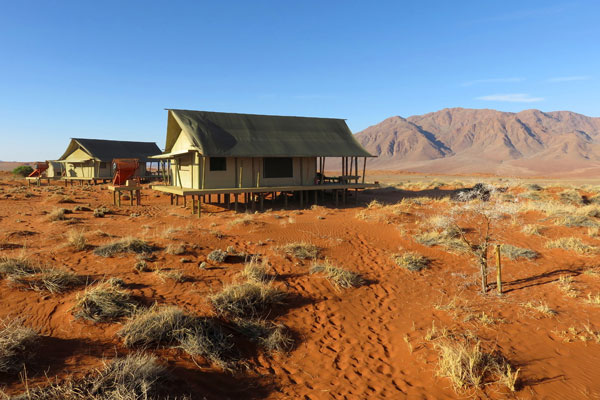
The Caprivi Strip is situated in the north-east of Namibia and unlike the rest of the country is blessed with good rainfalls. Caprivi Strip accommodation at the lodge is in 10 tented suites, connected to a central area through a network of pathways. Each en-suite tent is made of steel, wood and canvas and has proper doors and windows – ideal for a completely safe rustic feel. Private verandas allow views over the untamed bushveld where you can see a host of various plant life and the resident bird life as well as mammals.
Etosha
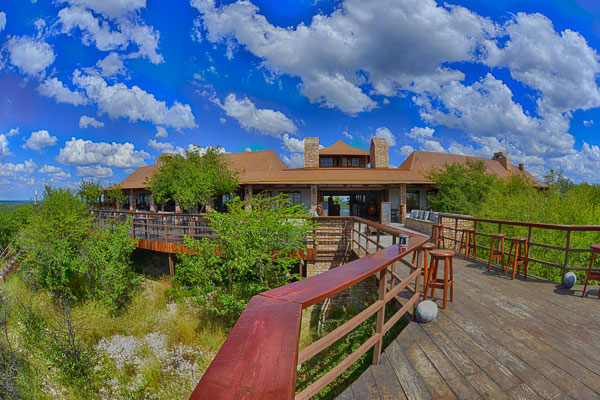
Being one of Southern Africa’s most popular wildlife parks, Etosha National Park caters to all kinds of safari lovers. Having a particularly dry climate – the concentration of big game around the waterholes makes game viewing incredibly rewarding. You might not even have to leave your rest camp to see lion, elephant, rhino and any number of antelope and zebra quenching their thirst. Here is our selection of quality accommodation spots inside and outside the park to keep you comfortable during your stay.
Fish River Canyon
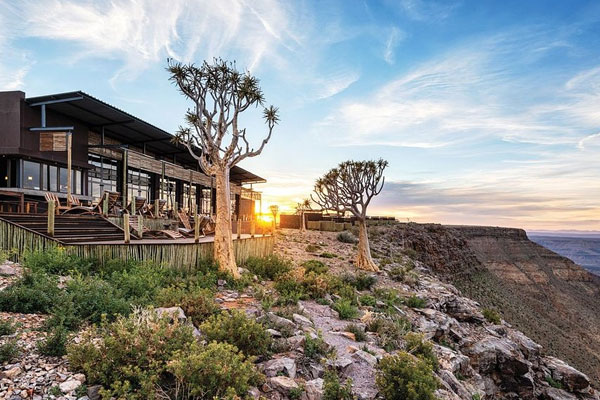
Located on the rim of the Fish River Canyon, one of Namibia’s top tourist destinations, Fish River Lodge offers forty guests breath-taking views directly over the canyon from sunrise to sunset. Explore the canyon and surrounds by foot, safari vehicle or mountain bike and experience the drama of this 500 million year old geological wonder. There are many possibilities to find an accommodation around the canyon with some incredible views. Listed below are some of our favourite places to stay.
Central Region
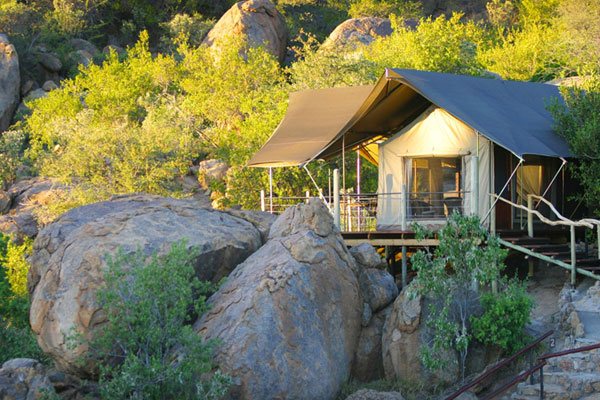
Find your ideal accommodation in Central Region by browsing our wide selection of accommodation options in Central Region. Namibia has the widest choice of accommodation in southern Africa. In the towns there are hotels, boutique properties and guesthouses. Out of town you'll find remote tented camps, lodges and farmhouses. Staying at an owner-run guest farm gives a fascinating insight into farming in Namibia whilst tented camps allow you to explore remote areas.
Keetmanshoop
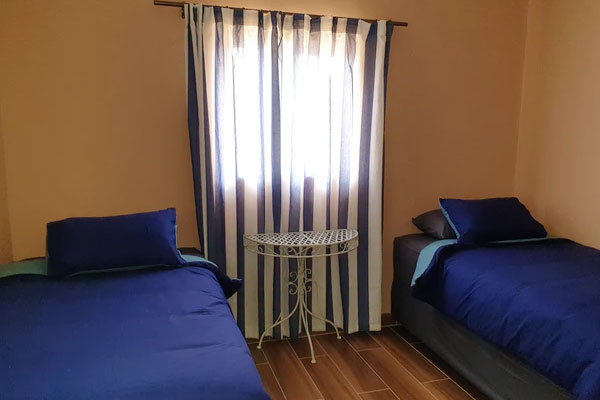
Our guide to budget, exclusive, luxury and affordable overnight holiday accommodation in the Keetmanshoop tourism region with a list of hotels, holiday resorts & spas, safari lodges, game lodges, bush camps, bed-and-breakfast, guest houses, backpackers, apartments and self-catering accommodation in Keetmanshoop.
Luderitz
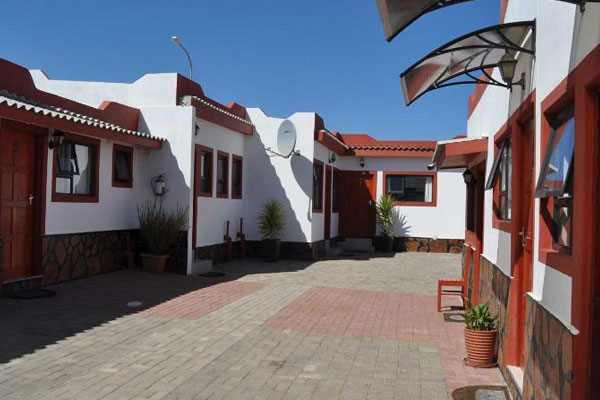
The town of Lüderitz is found in southern Namibia, on the western side of the country. It is located on the coast, in the Namib Desert giving it a mild arid climate. A quick look at our website will give you the information you need to make your choice. You will find reviews and you will also be able to compare prices and find wonderfully affordable accommodation in Luderitz. By using our easy website, you can find great accommodation of all types, whether it is a cosy bed and breakfast or a comfortable lodge.
Skeleton Coast
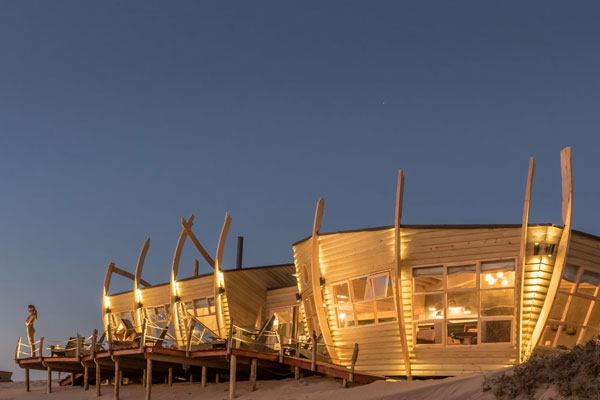
The Skeleton Coast is named after the thousands of shipwrecks that strew this stretch of Namibia, which runs from the Kunene to the Swakop Rivers. A place of immense quietude, the Skeleton Coast is truly off the beaten track, and offers adventurous and curious safari goers a rich, rewarding and unforgettable time in northern Namibia. A mysterious place where the coolness of the Atlantic meets the heat of the desert, it is often shrouded in fog, the cause of all those sea captains of old losing their bearings.
Sossusvlei
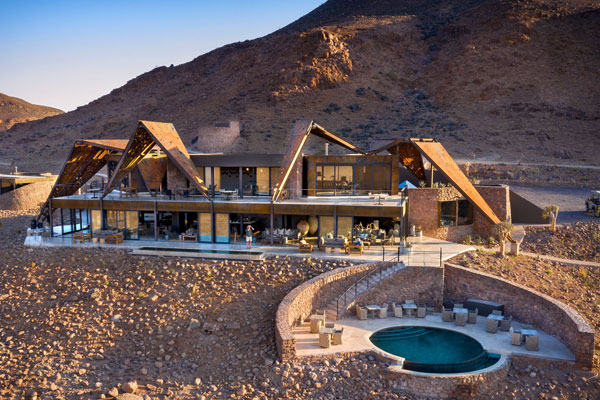
There are various accommodation providers around Sossusvlei who cater for a wide range of visitors. Whether you are a discerning traveller looking for a luxurious desert retreat with all of the conveniences that your heart desires, or a family looking for self-catering accommodation to suit your budget, or you are feeling more adventurous and looking for a campsite on which to pitch your tent, there is an establishment to suit your needs.
Swakopmund
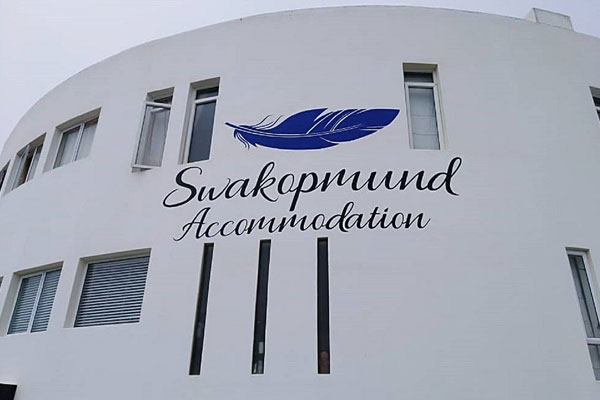
Guests looking for cool and comfortable Swakopmund accommodation can relax in the spacious rooms and enjoy uncluttered soothing interiors. Accommodation in Swakopmund ranges from luxury guest houses and hotels to affordable lodges, enough to suit all tastes, budgets and trip types. If you're looking for a safari stopover on the coast or a cultural getaway, our selection of Swakopmund accommodation is sure to inspire you and will make planning your Namibia holiday so much simpler.
Frequently Asked Questions Namibia
We Think You’ll Love
Namibia has a very favourable climate, averaging 300 days of sunshine each year.
Summers (October to March) can be very hot with Namibia Temperatures reaching 35C, but this also the rainy season so a lightweight rainproof jacket is very useful. Winter days, during April to September, are agreeably warm but temperatures can plummet to below zero at night so warm clothing is essential.
While English is the official language of the country, Afrikaans and German are widely spoken in Namibia.
The Namibia Currency used is the Namibian dollar. Mastercard and Visa are widely accepted however, ATMs might be slightly difficult to come by.
A Namibia Visa is not required when travelling from Canada or the United States as a tourist for up to 90 days. A valid passport is mandatory to travel. Your passport must be valid for a minimum of 6 months after the date you enter Namibia.
You can visit Namibia any time of the year as it is usually dry and warm. Wildlife viewing is best in the dry season, so the Best Time To Travel To Namibia is from May to October.
Namibia is a great destination for your next family vacation as the country is very safe and there are Namibia Activities for everyone! If you’ve a desire to see wide open spaces of desert and the varied animals that survive this arid landscape, Namibia is for you.
We are thrilled to help you plan your perfect safari holiday
We'd be delighted to help you with any questions you have about properties & safaris. Please fill in the form below so that we can help you create your perfect safari holiday.
Or
Contact Us
Feel free to give us a call or send us an e-mail:
Start Planning Your Tailored African Safari

Expert Safari Knowledge
With decades of expertise, we're your trusted safari guides, ensuring every moment exceeds your expectations.

Tailor-made African Safaris
Tailored to your preferences, our African Safaris guarantee an adventure perfectly suited to your desires.

Long-term Relationships
Our enduring partnerships across Africa provide exclusive access and authentic experiences.

Carefree Travel
Leave your worries behind and accept carefree travel with Falcon Safaris, where every detail is handled to perfection.
Our Travelers Say
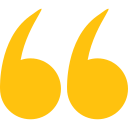
We travelled with Falcon Safaris in Zimbabwe and Botswana for 16 days. Falcon designed a wonderful trip with private guide to the most interesting sites in both countries. The organization of the whole trip was excellent, flights within the country, accommodation and activites. The guides were very knowledgable and told us a lot about the countries, their history, people, economy and much more. We visited the Great Zimbabwe Ruins, the Victoria Falls Tour and a number of national parks in both countries.
Rhino tracking was a real adventure! We had tremendous further game drives and saw very many animals - we did the Big Five. We had much more Victoria Falls Activities than planned and enjoyed very much.We strongly recommend Falcon Safaris to everyone planning a trip to Southern Africa and East Africa.
Wonderful trip to Zimbabwe and Botswana with excellent organization and very competent guides

Our Consultant Vimbai was very helpful and accommodating. We stayed at the Elephant hills hotel which was nothing short of amazing.Our activities included a helicopter flight, dinner cruise as well as a morning game drive. All the activities were absolutely amazing.
Exceptional!

We worked with Gertrude to schedule and organize everything and she did an excellent job. I asked a lot of questions via e-mail and she answered everyone in a timely helpful manner. Our guide at Victoria Falls was also great. He met us at the airport, provided a thoughtful tour of the Falls and got us to our next guide in Botswana. Our lodgings at River View Lodge were just as described- very comfortable and excellent food. All the staff were so pleasant and helpful. If I had to do it again I would arrange a morning boat ride as well. We only did the sunset boat rides and they were the high point of our entire trip- we saw so many animals and our guide was very knowledgeable. Just a great experience. Our lodgings at Oddball's Enclave was rustic and we loved it. So great to disconnect from the world for a bit. Leo, our guide, was the best - got us out and about, saw fantastic wildlife and got back to camp safely each time. Doc manages the camp so well. This whole trip was planned and organized by Falcon Safaris and we could not have been happier.
Fabulous, well planned trip

Falcon safaris have given my the correct advice with excellent service. The only suggestion will be to work closer with the lodges to confirm bookings as soon as possible. We have booked and pay our deposit a year in advance. We have only receive our final convermation from Chobe Safari lodge a week before departure. I do realize its not within your controle but with limit alternatives and a group of 14 people it becomes an issue to find alternative accomodation if the booking was cancelled.
Excellent and efficient service
Explore Our Africa With Customize Your Tour
We love Africa's diversity and create amazing trips for you. With 30+ years of experience, we customize every trip just for you.


